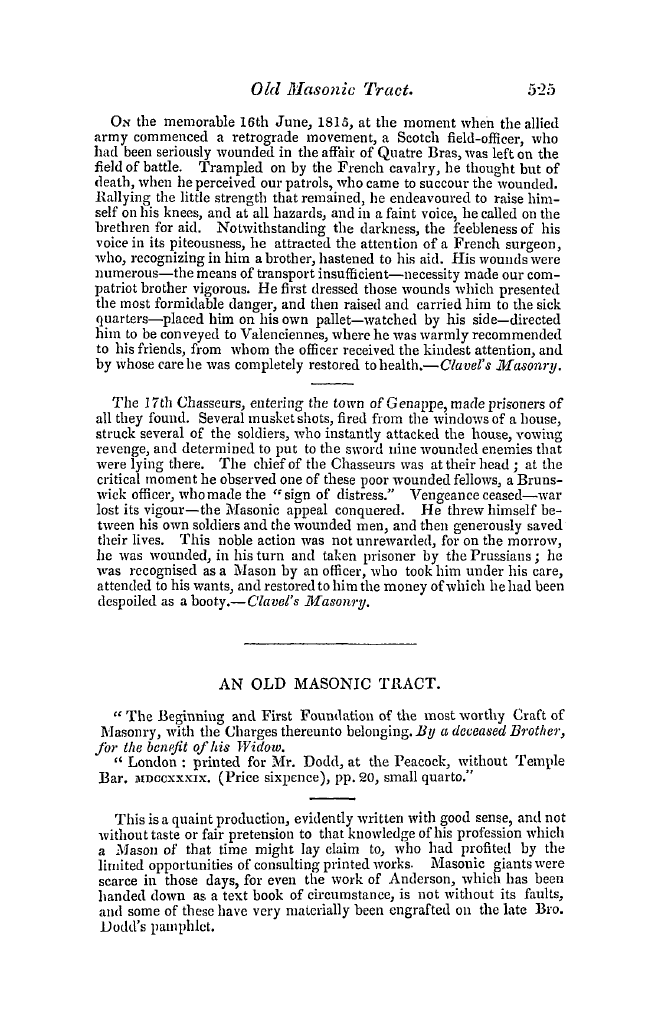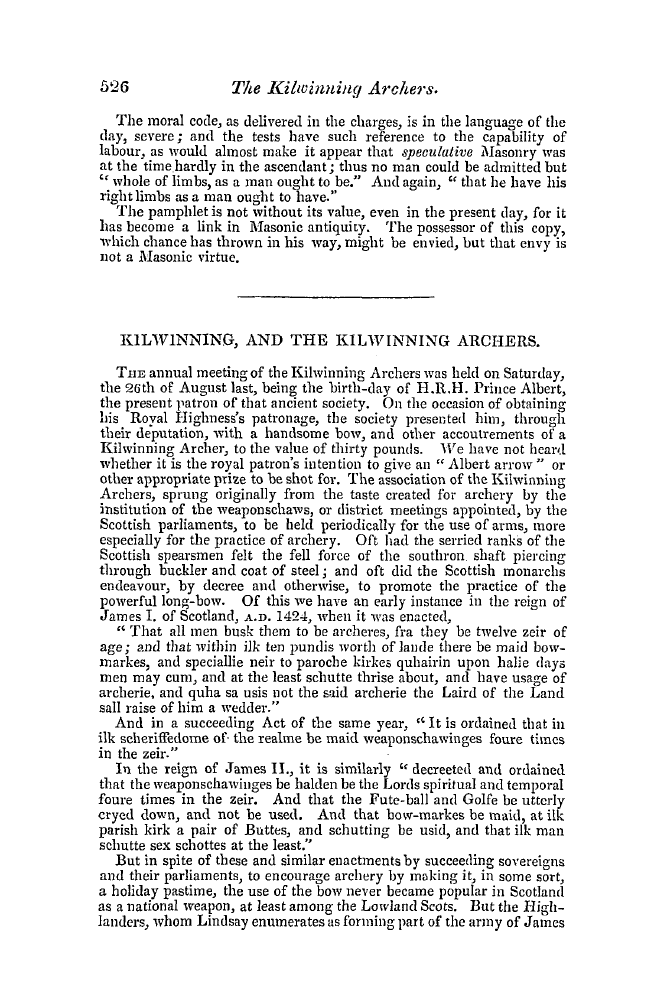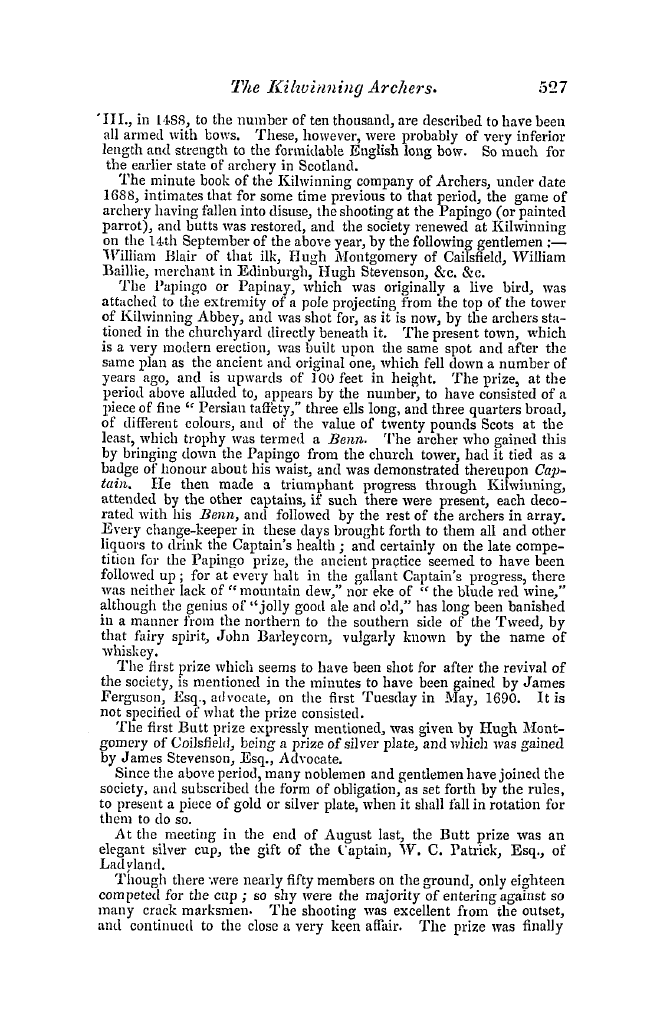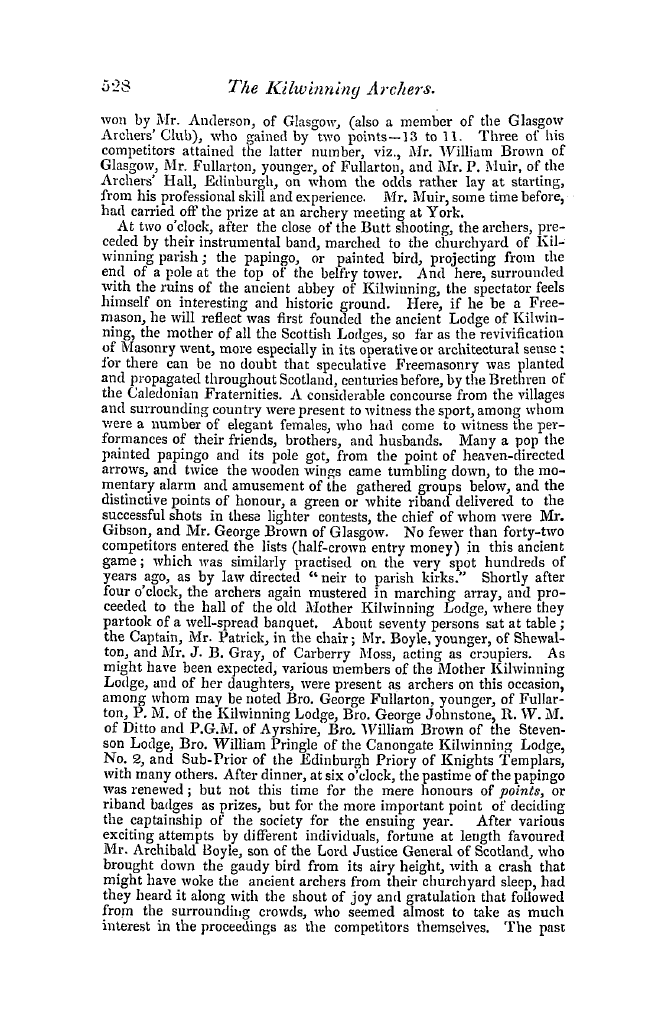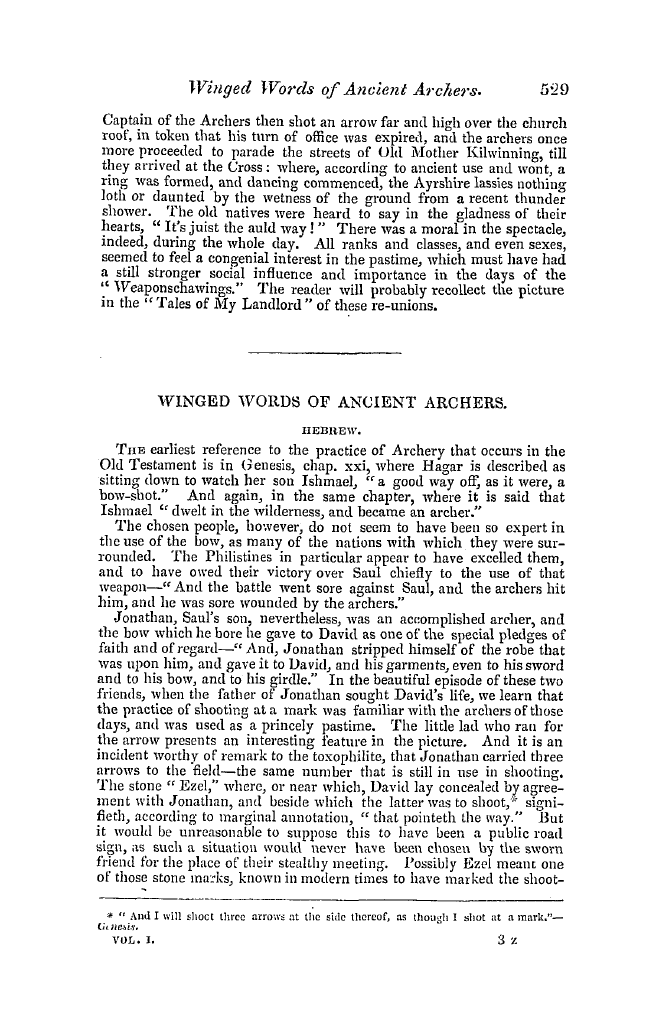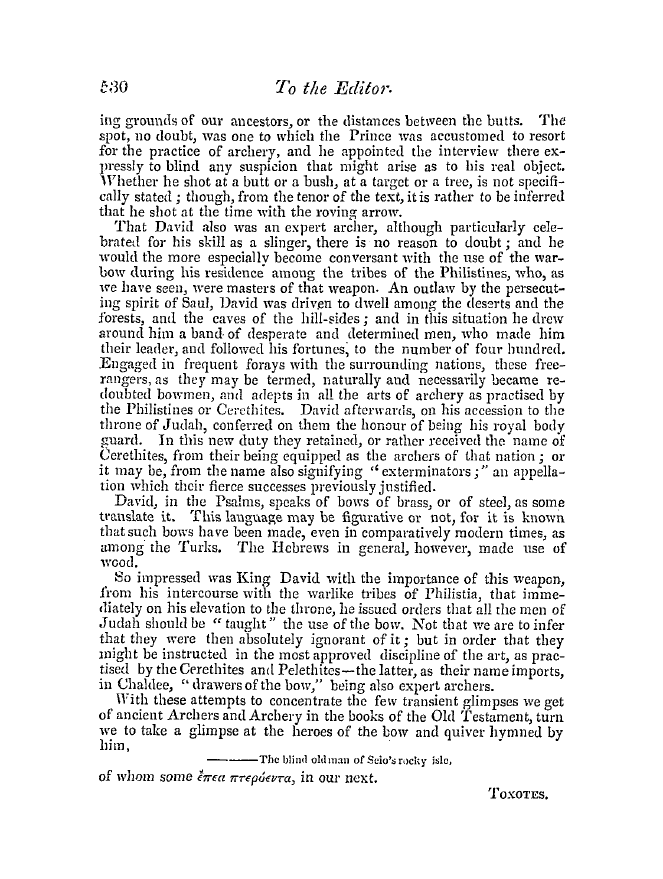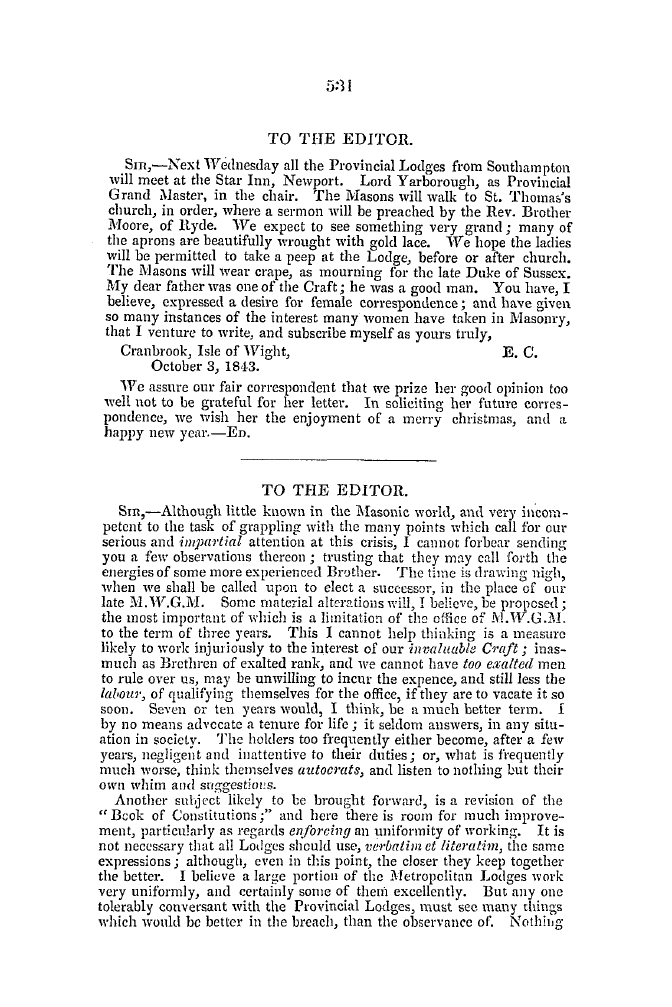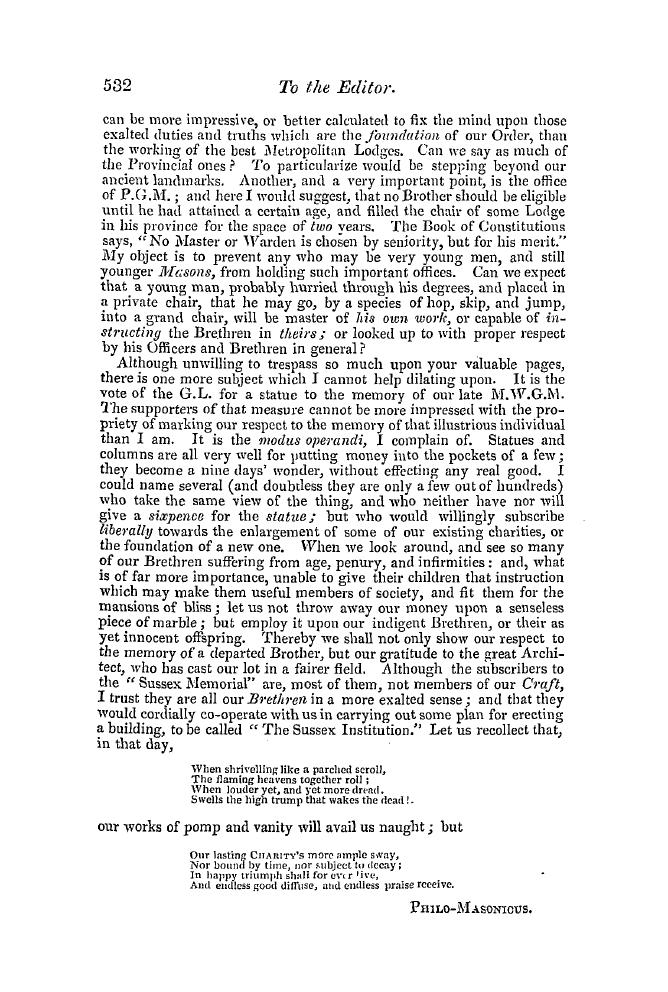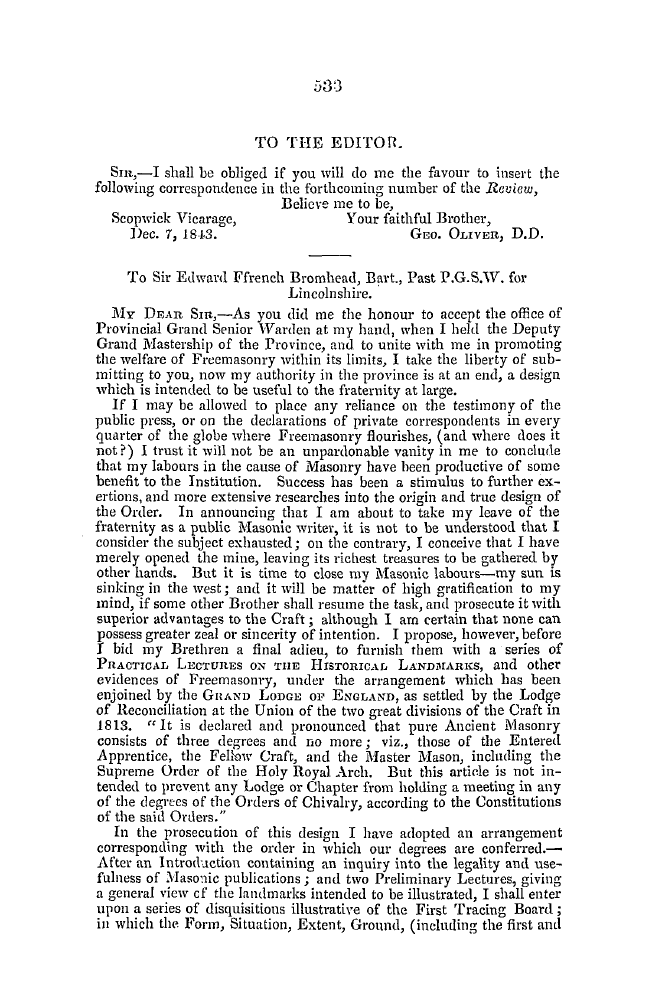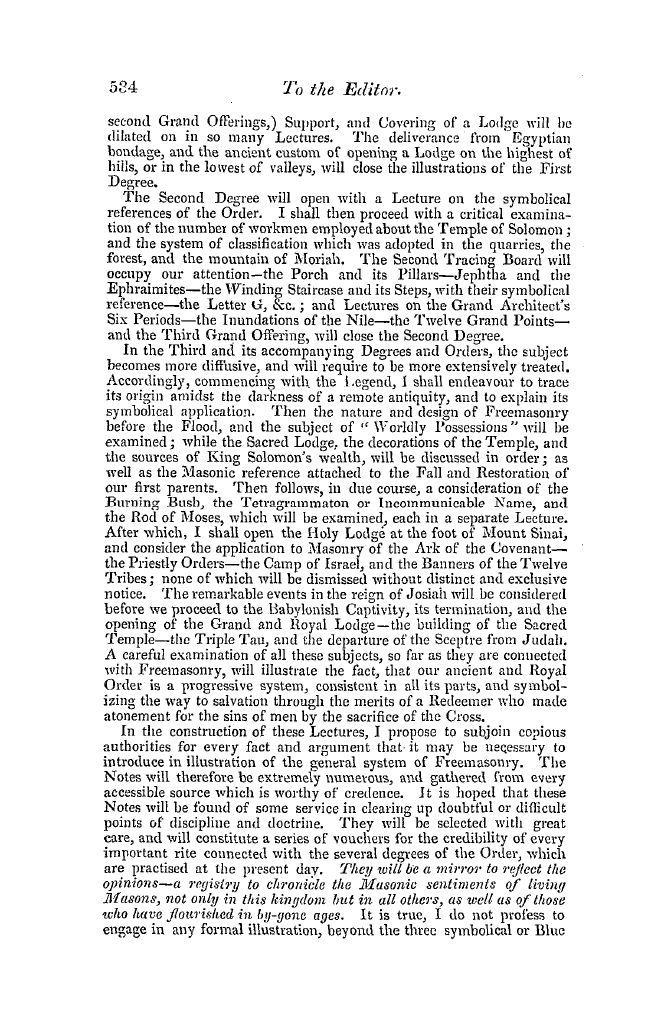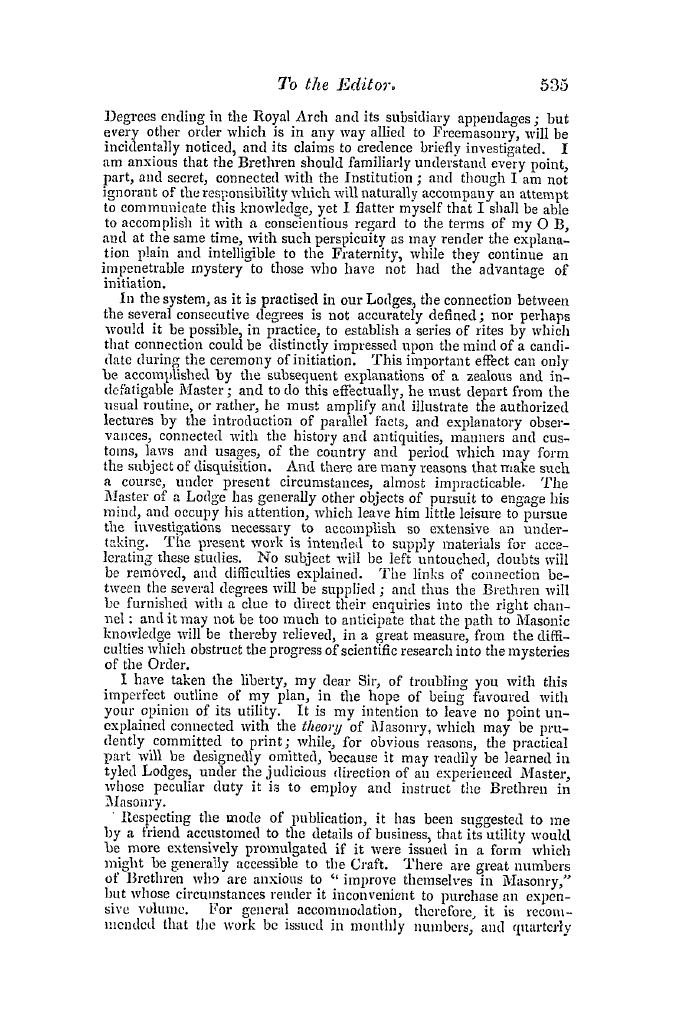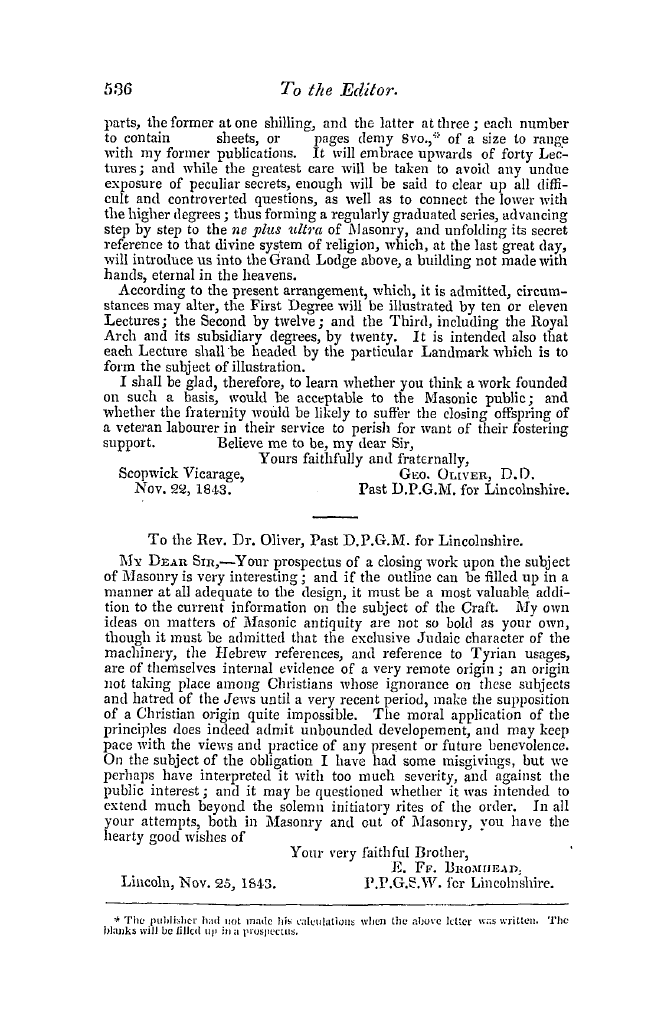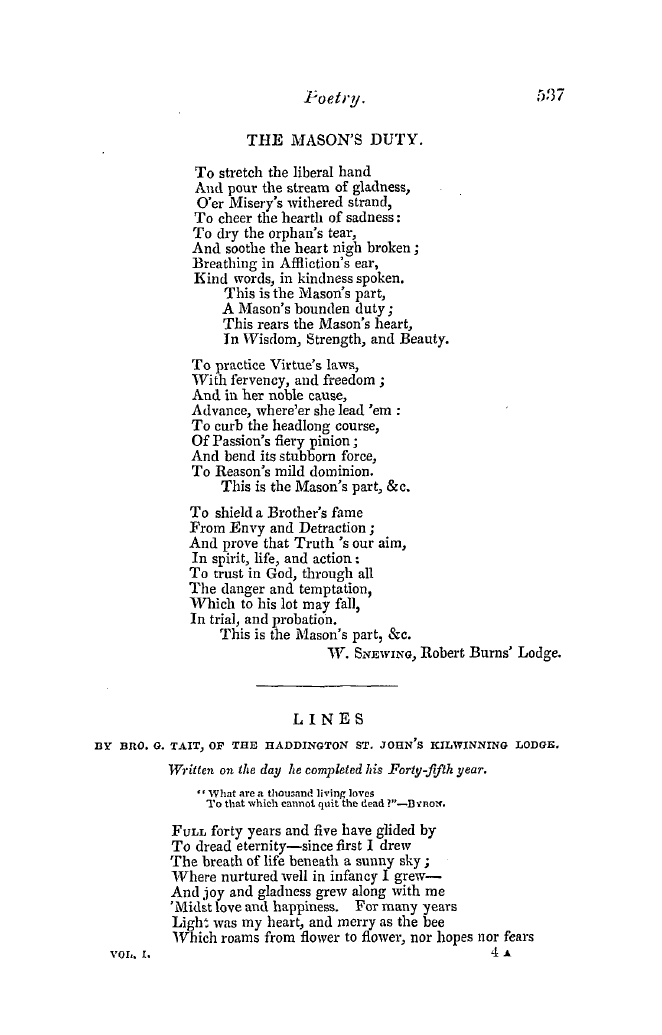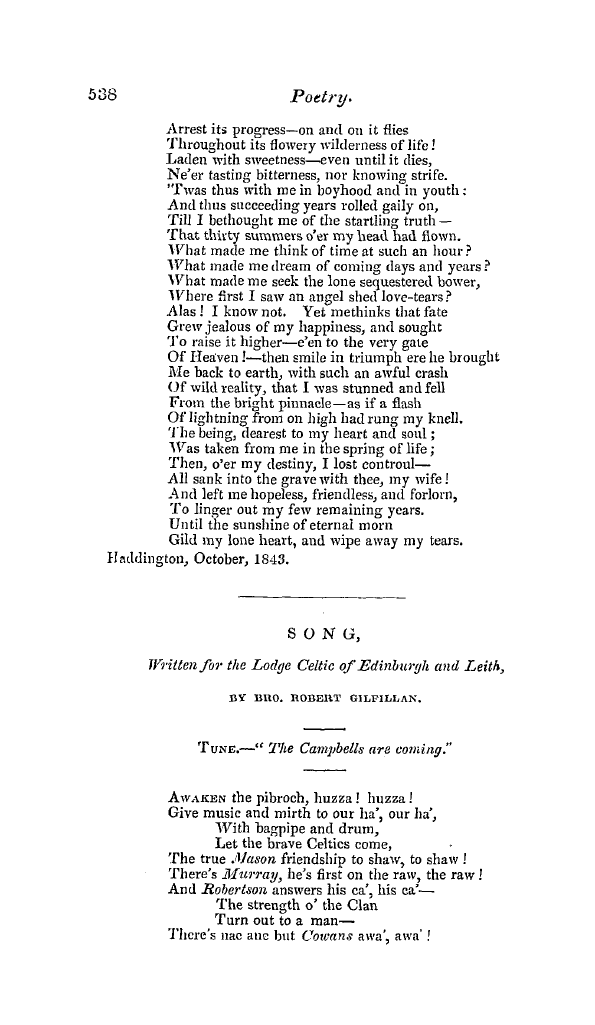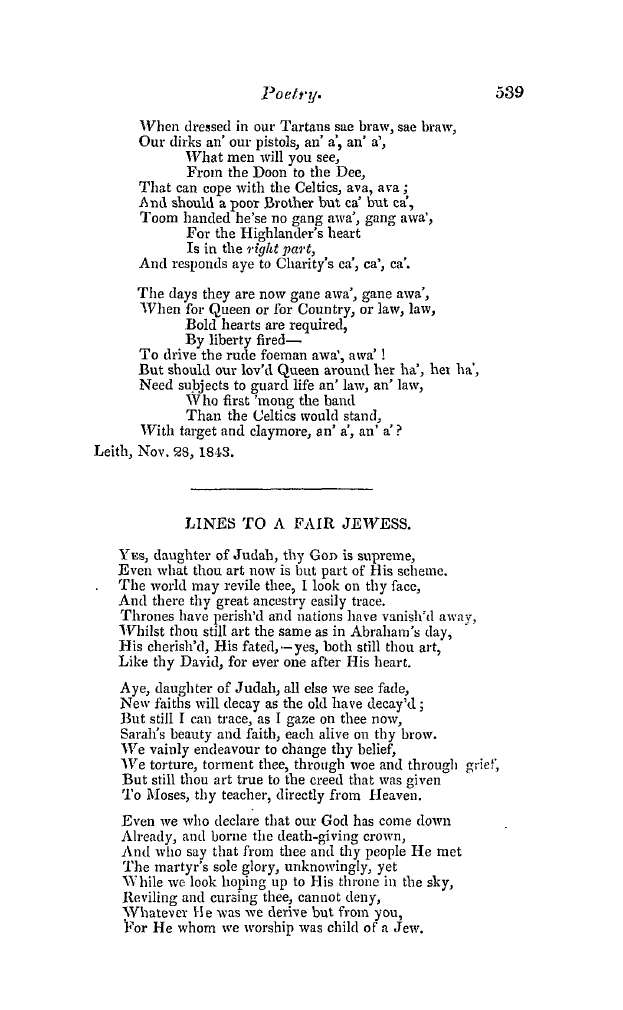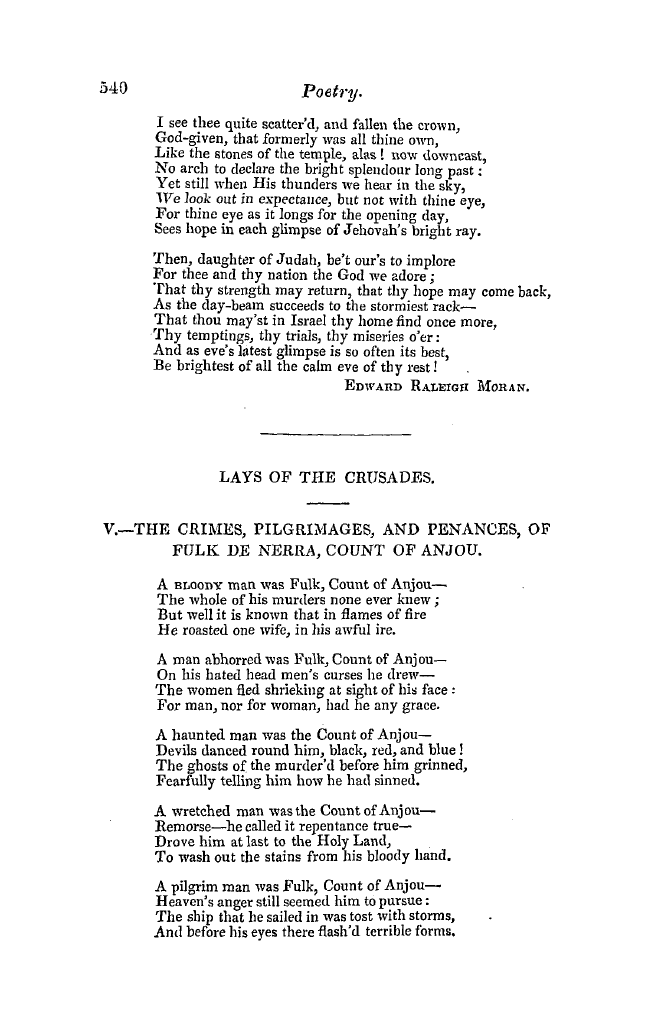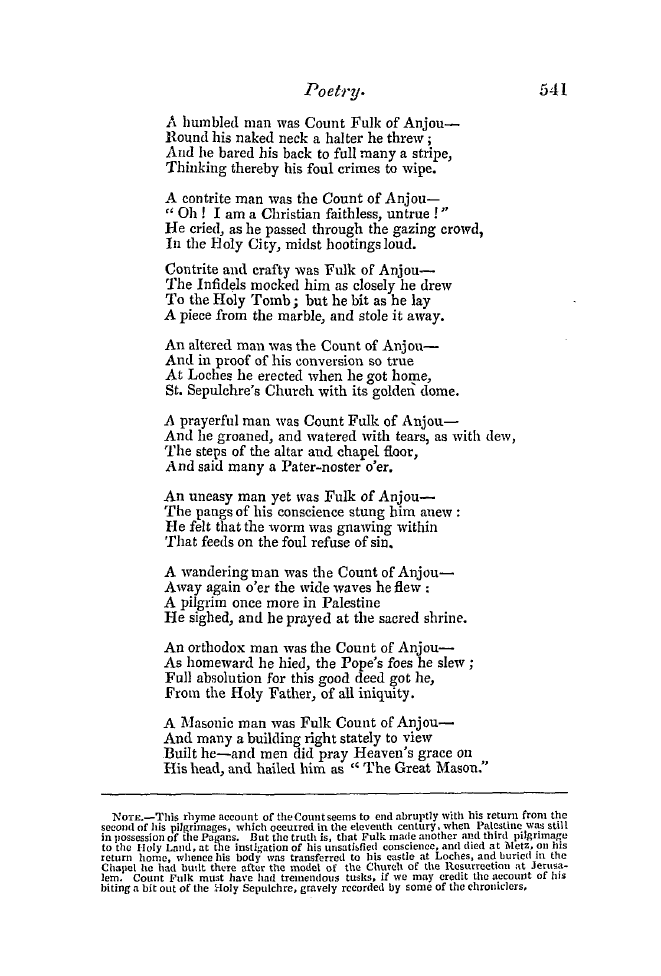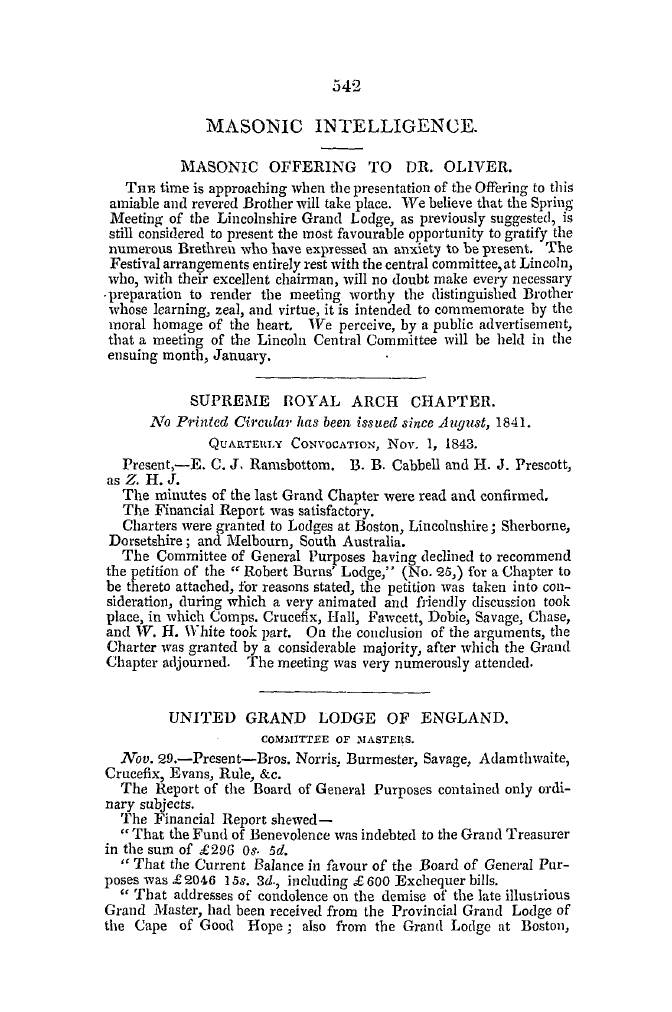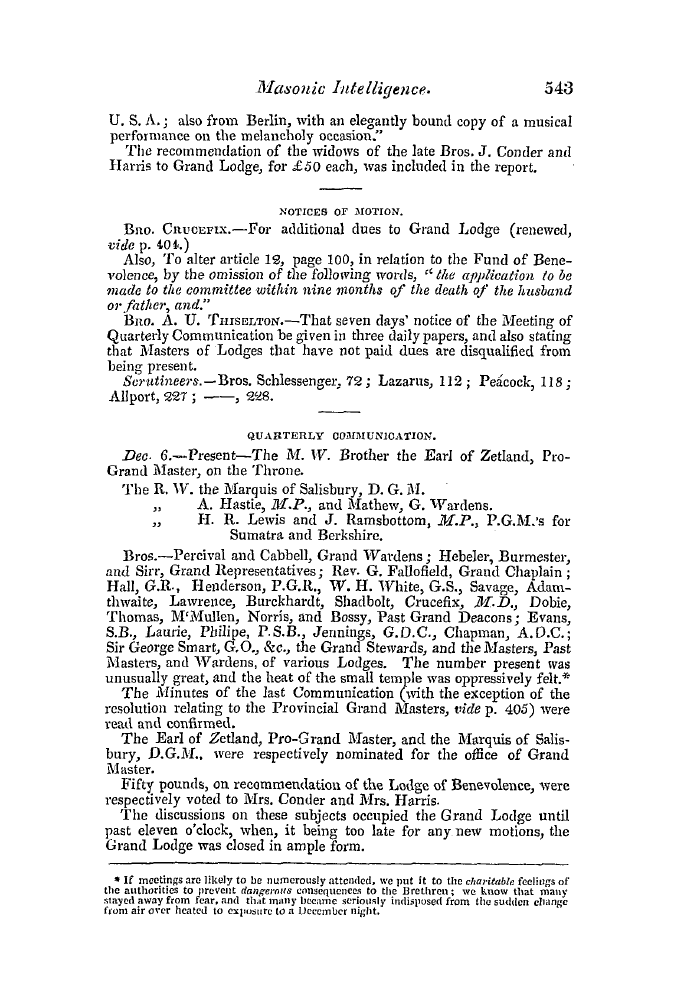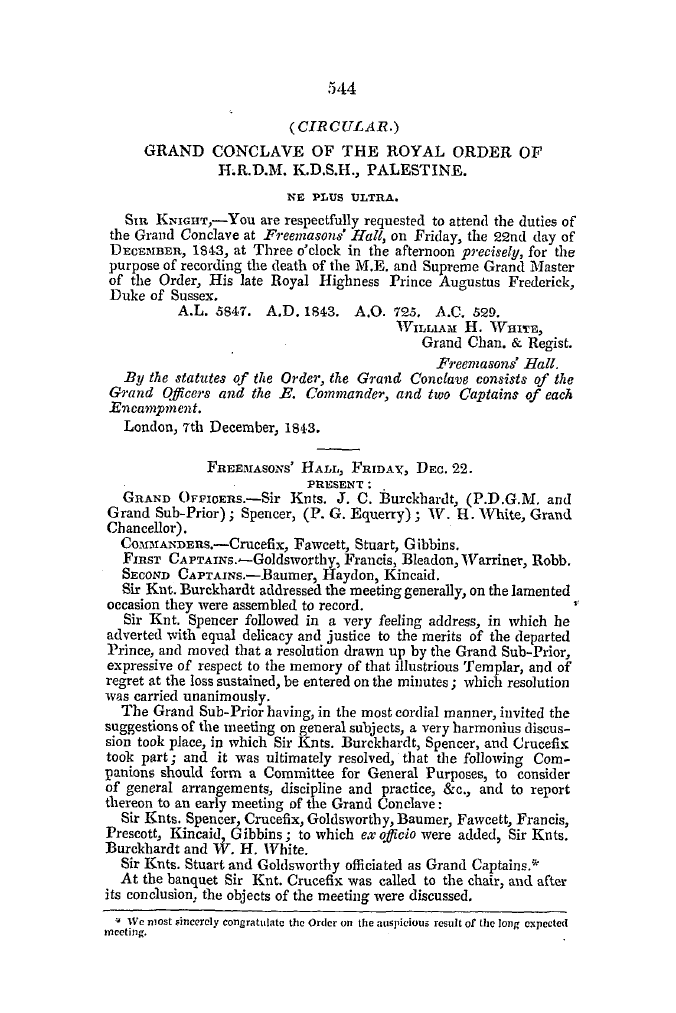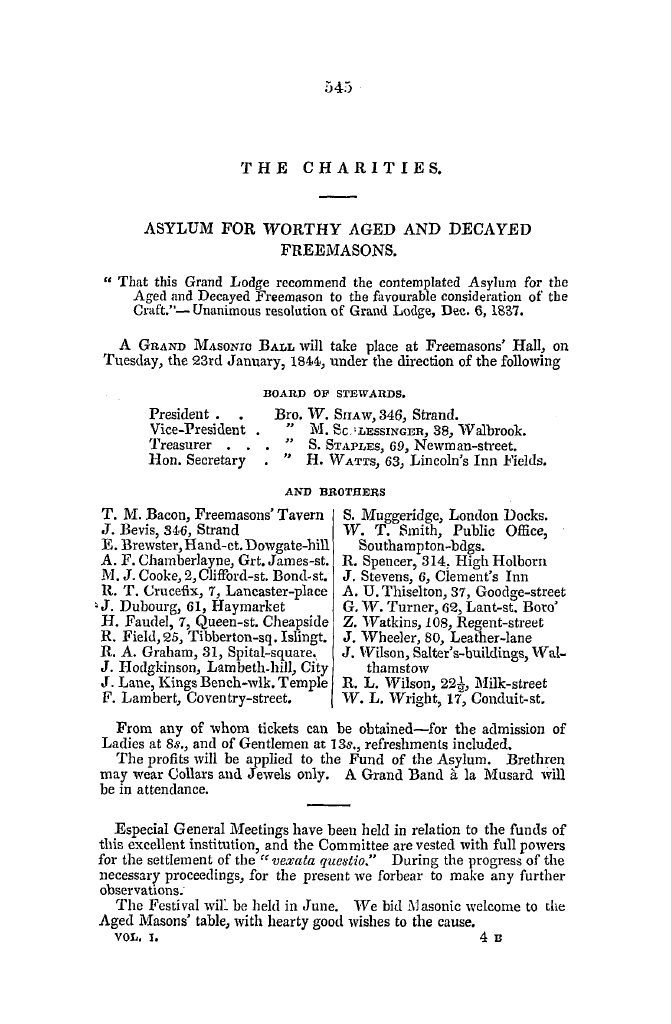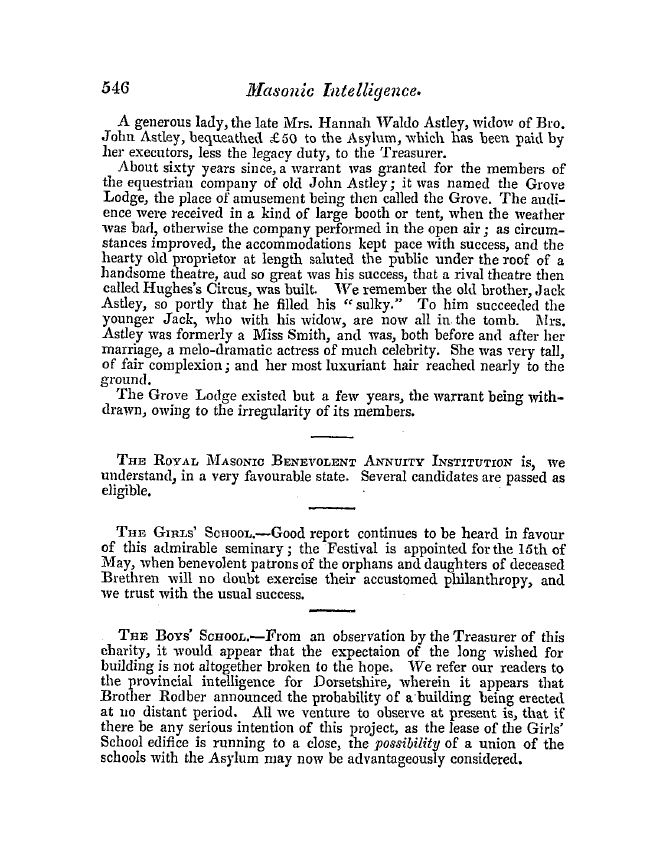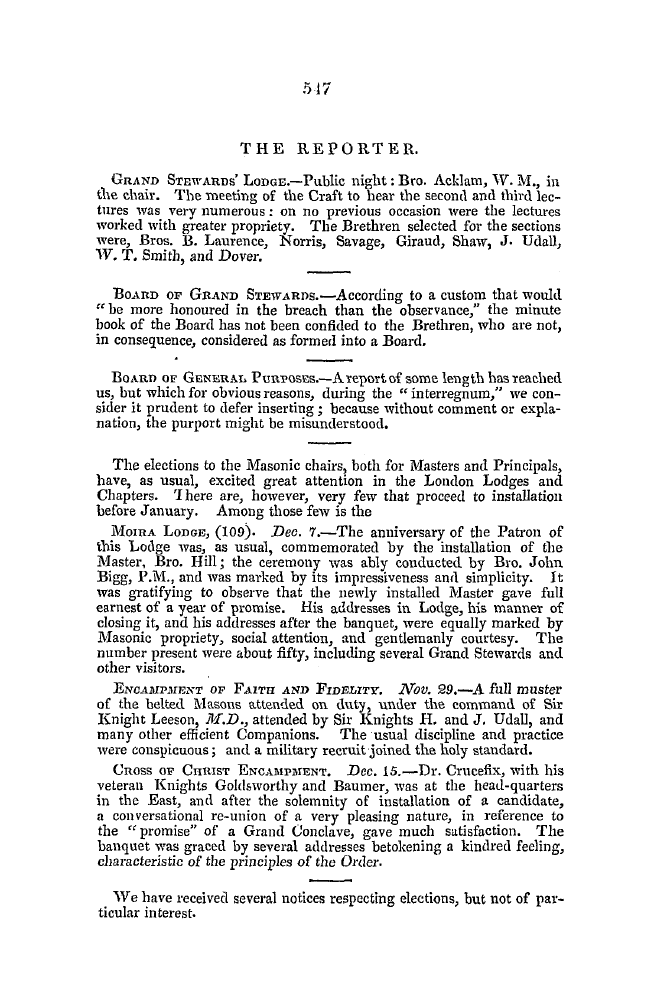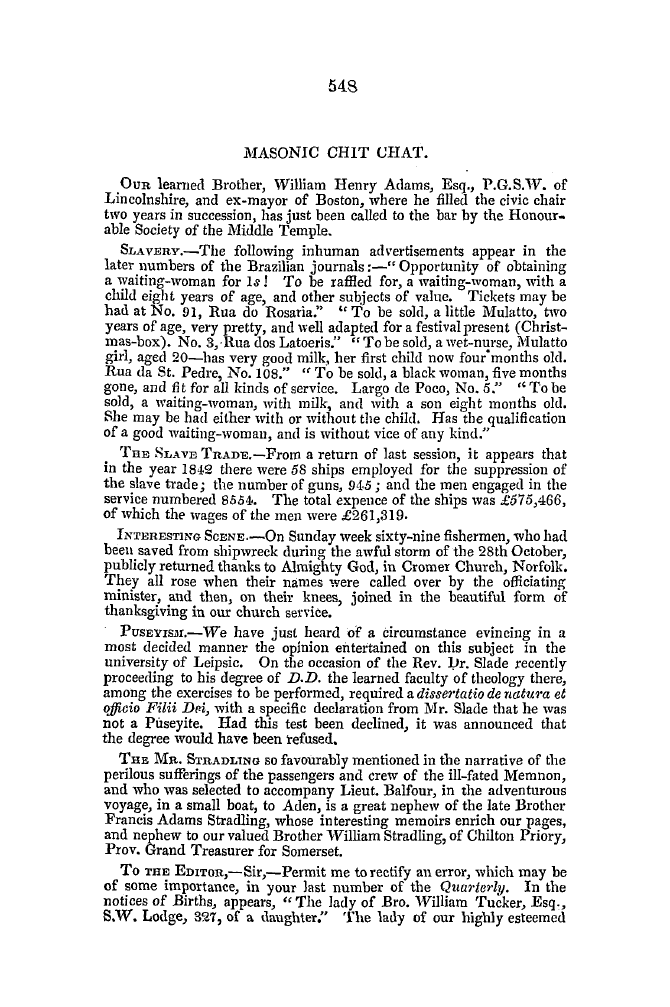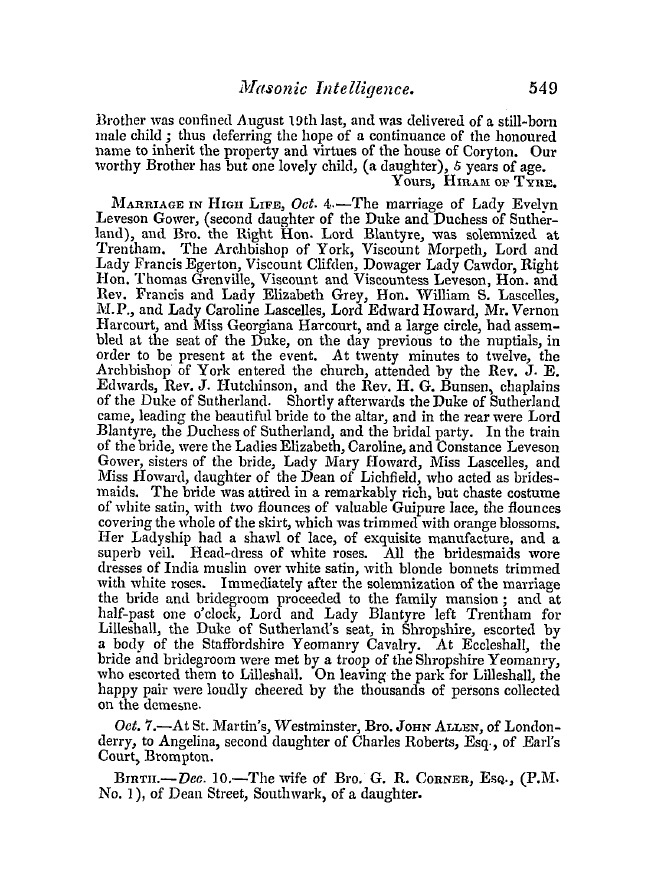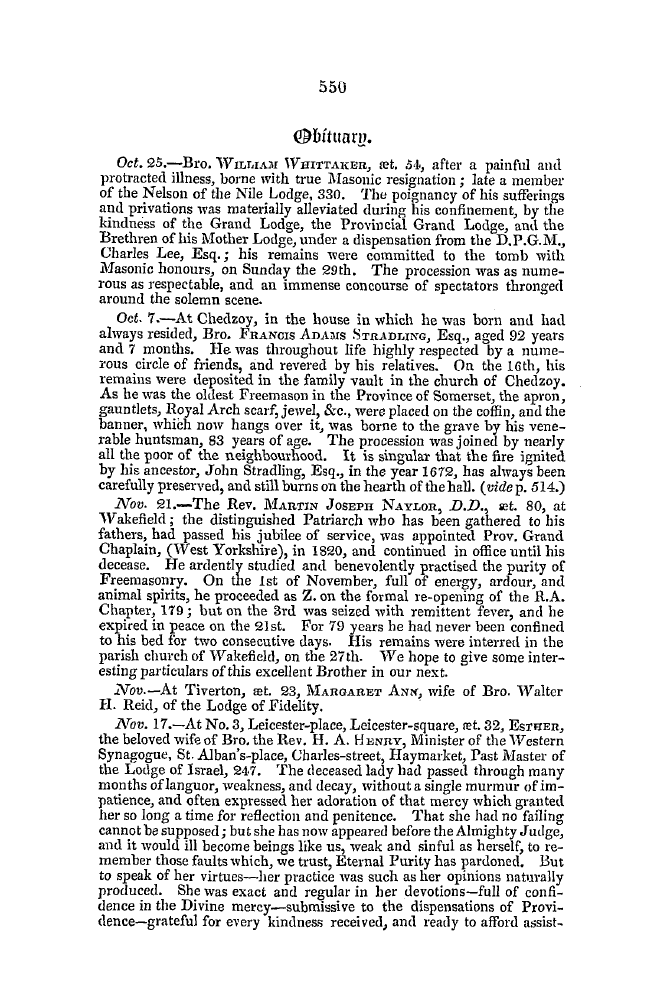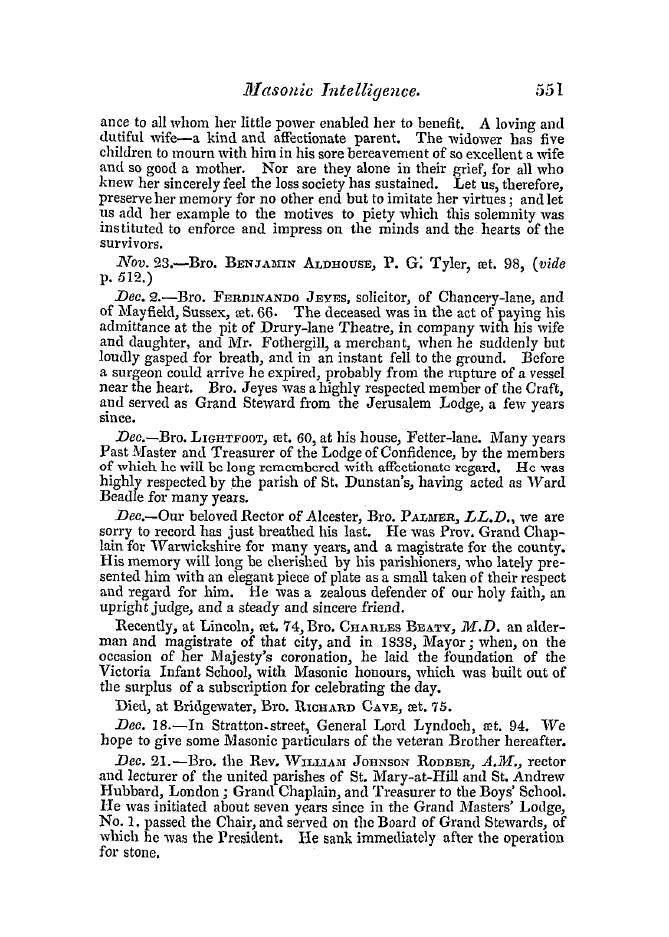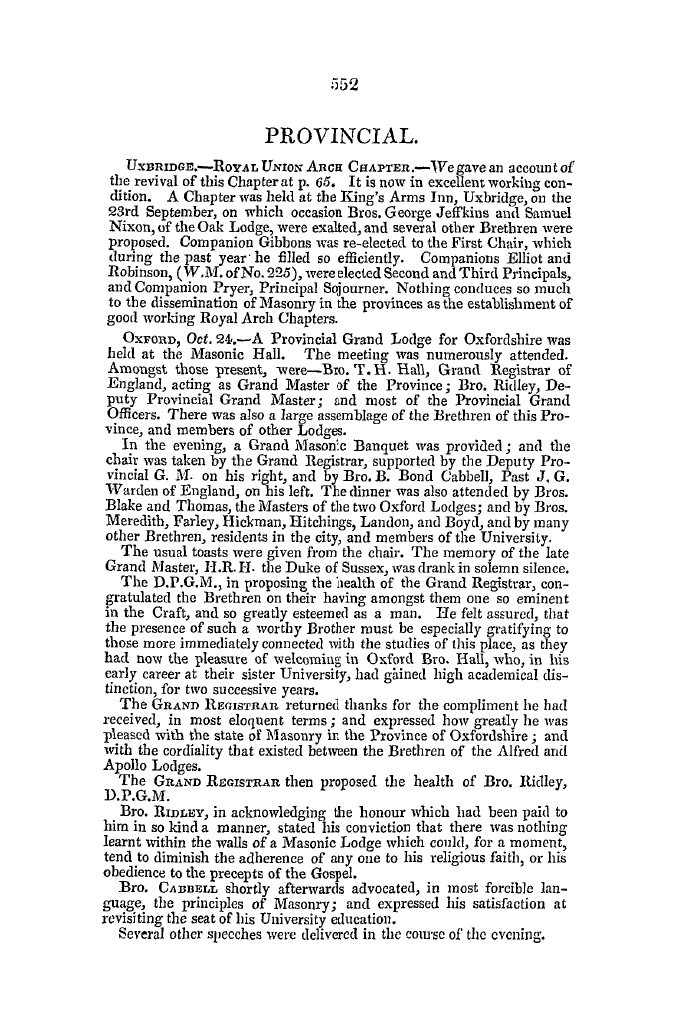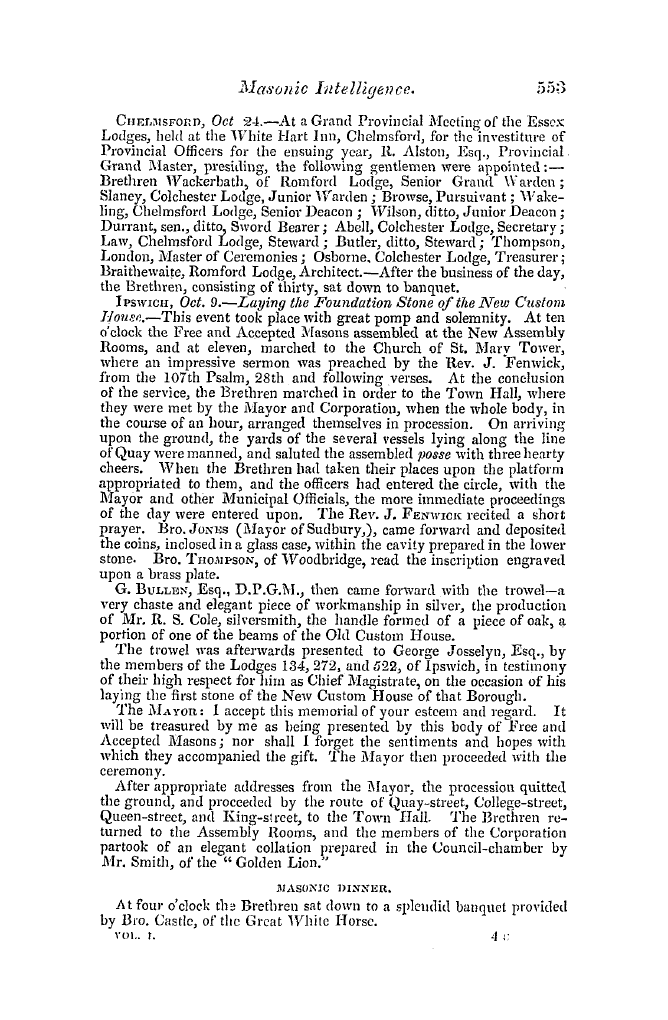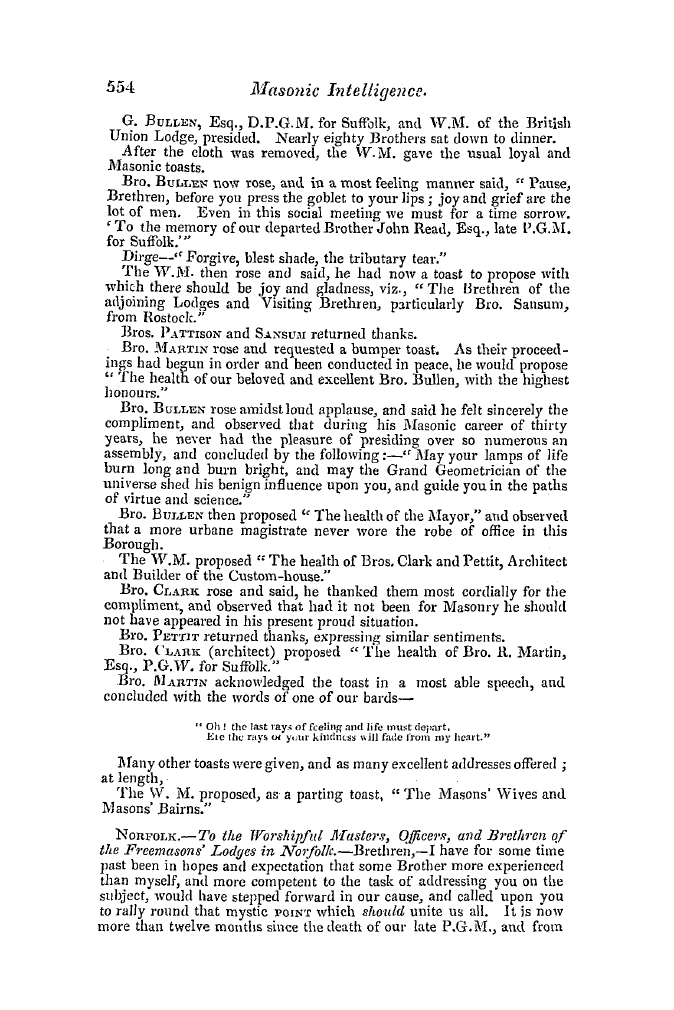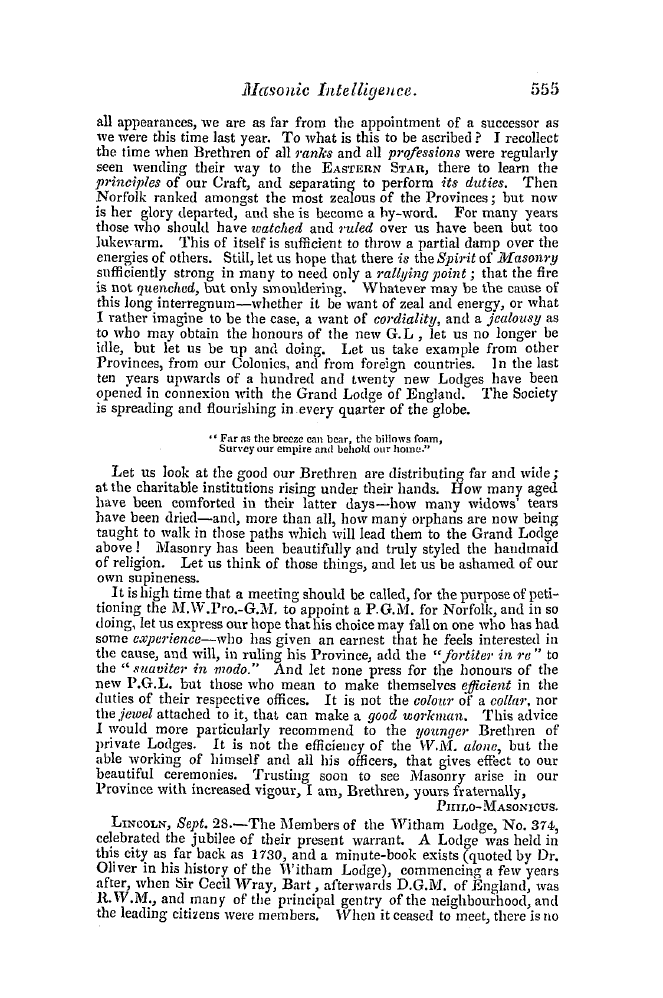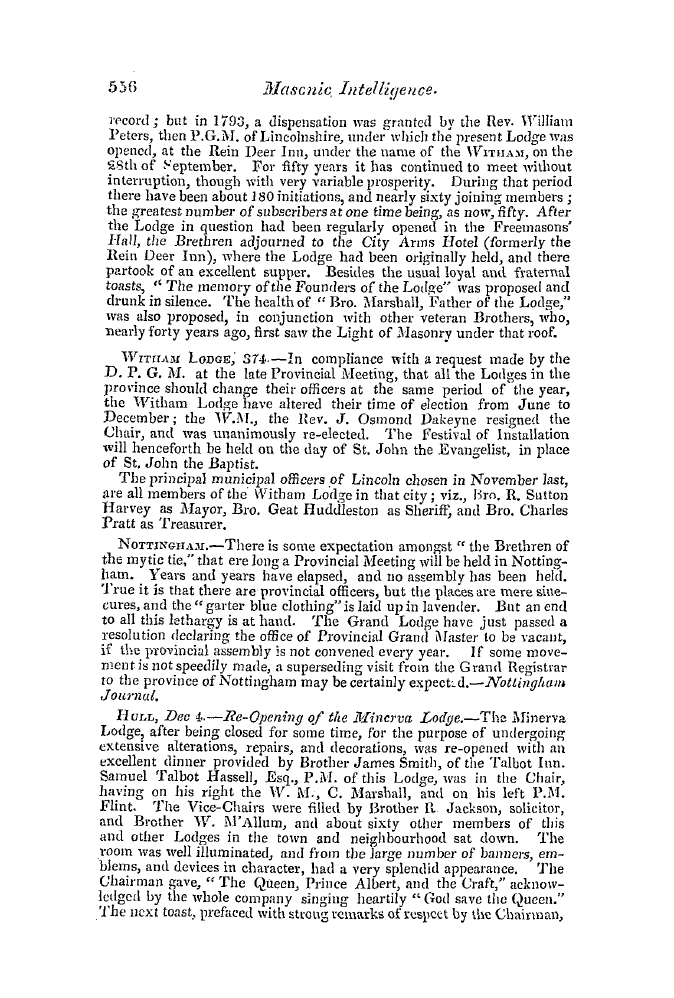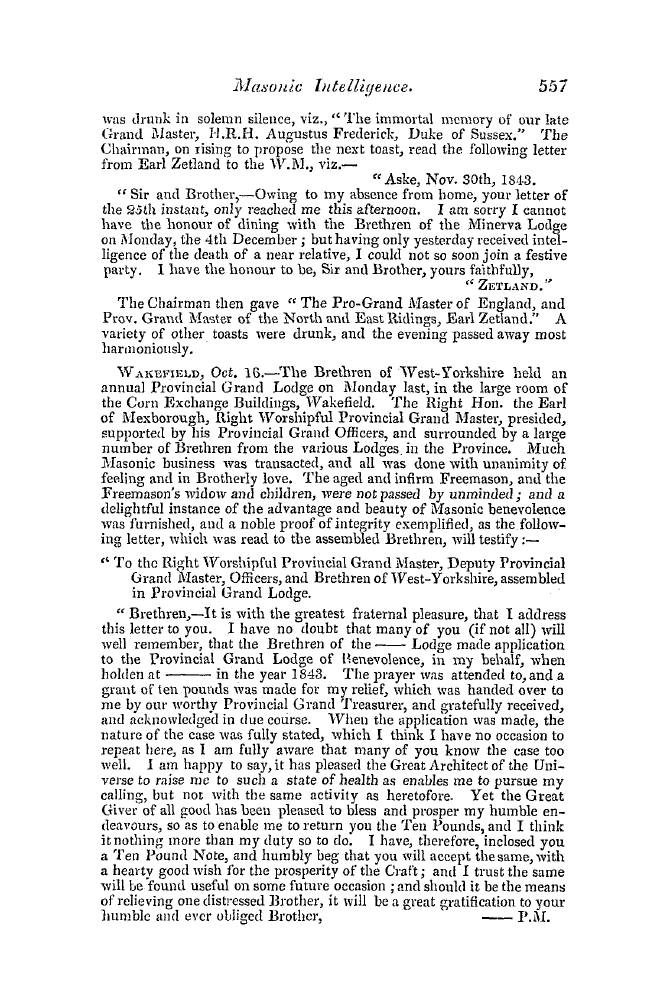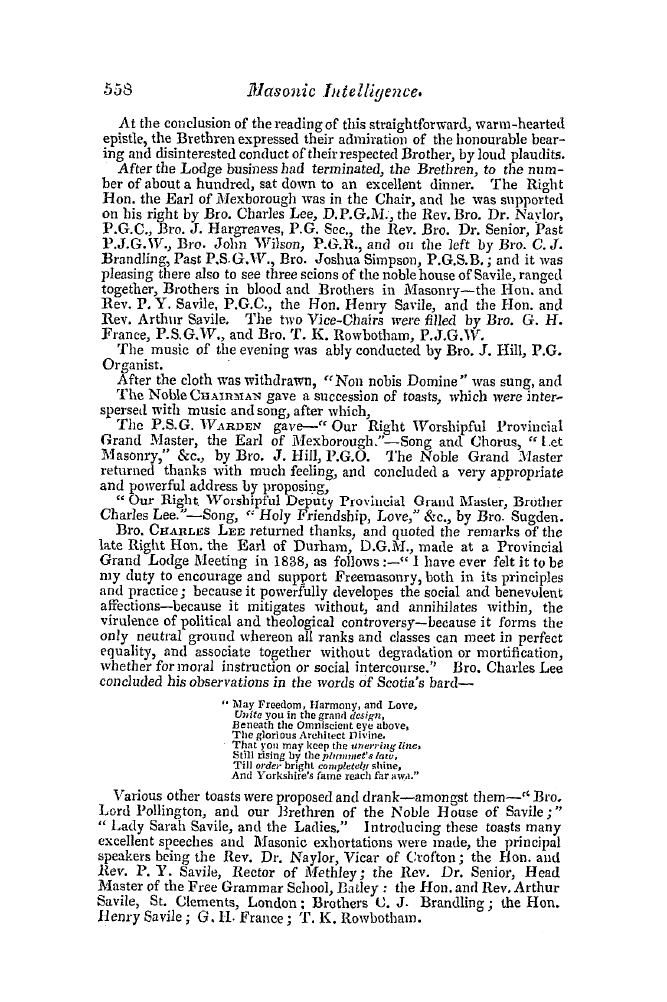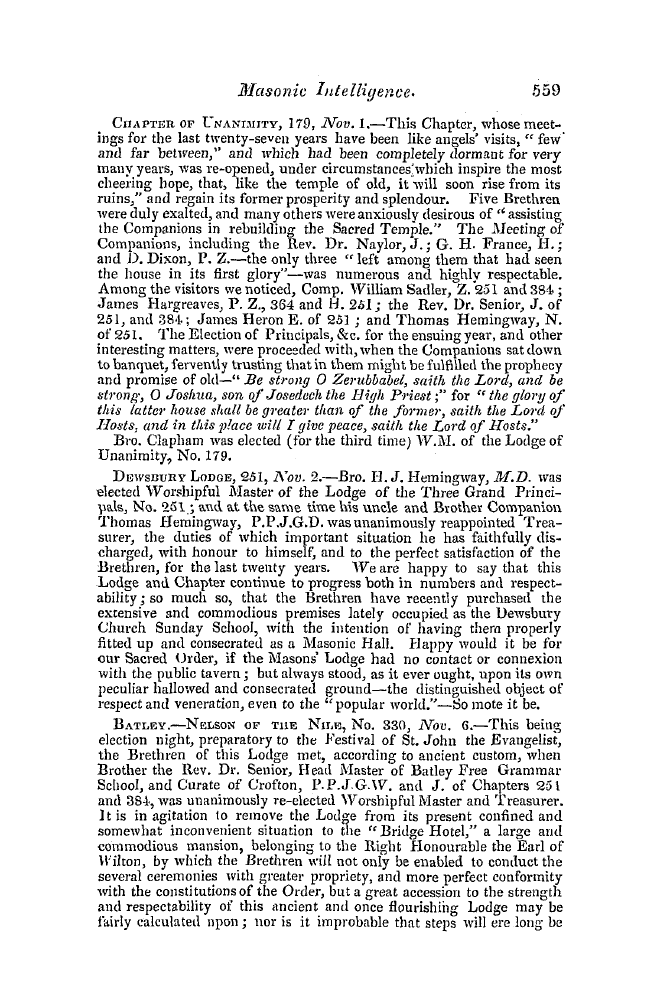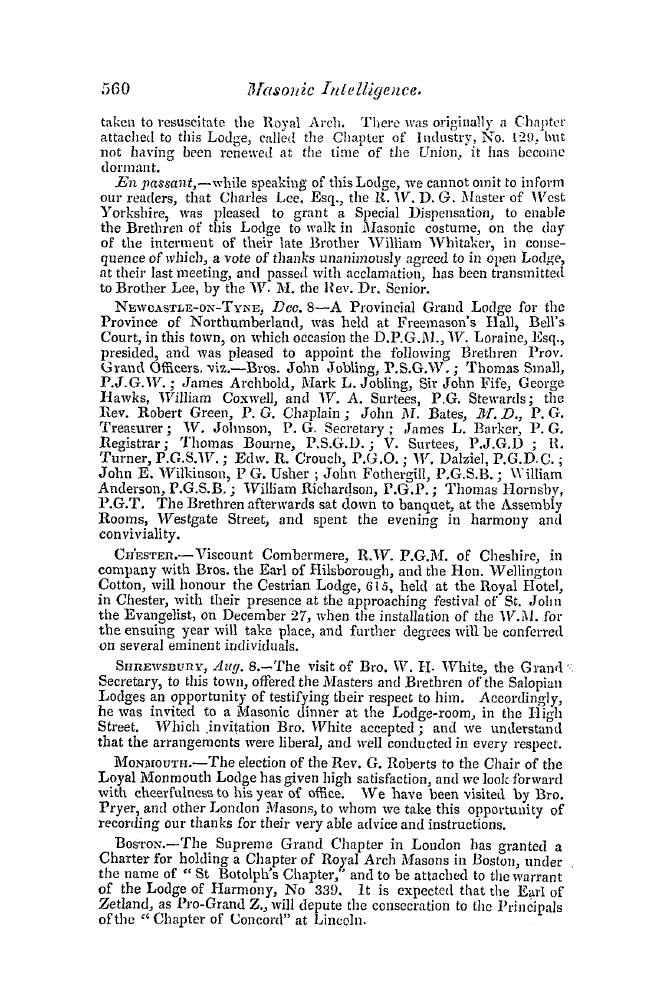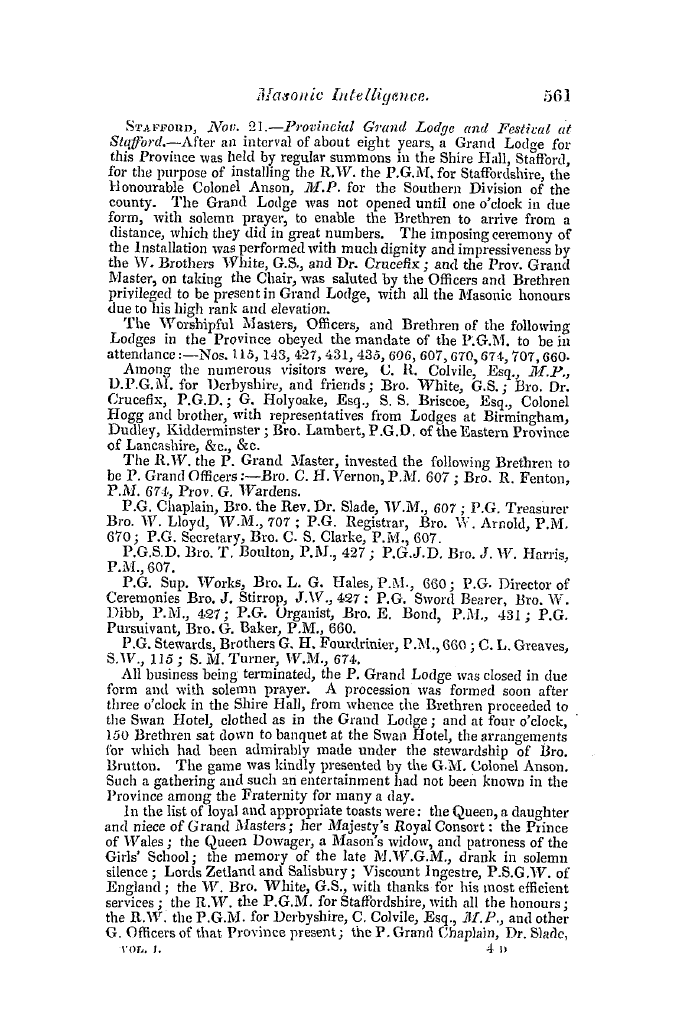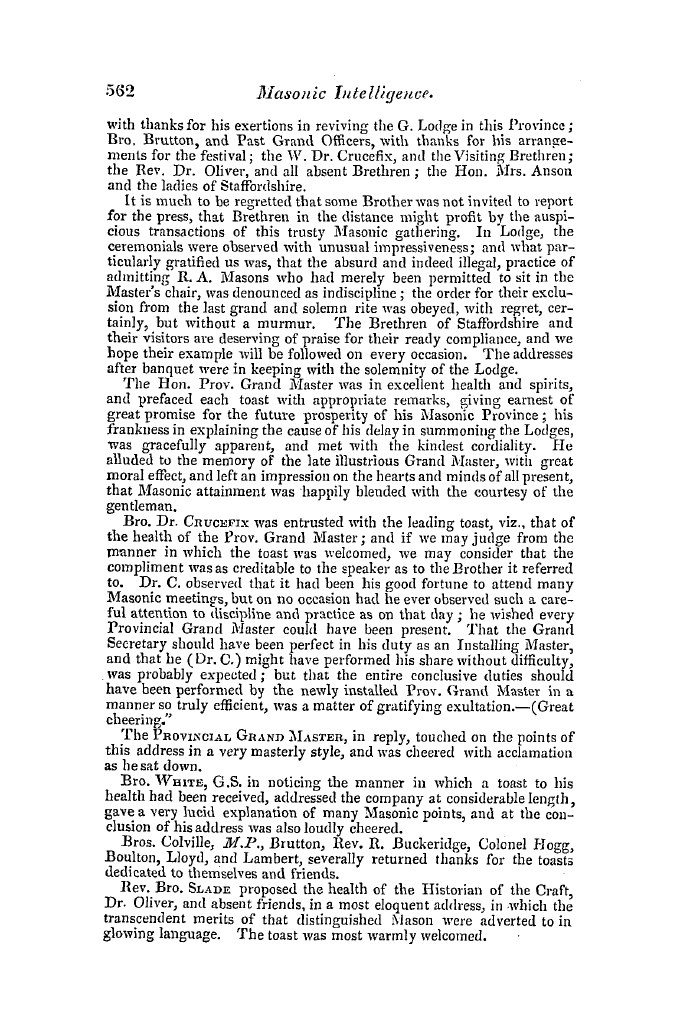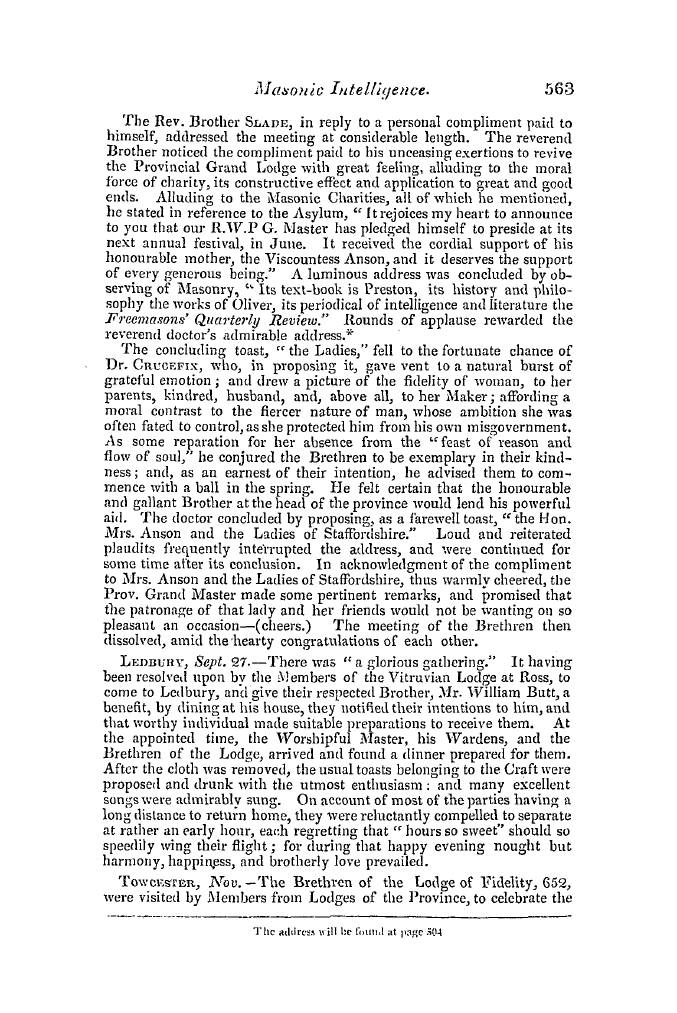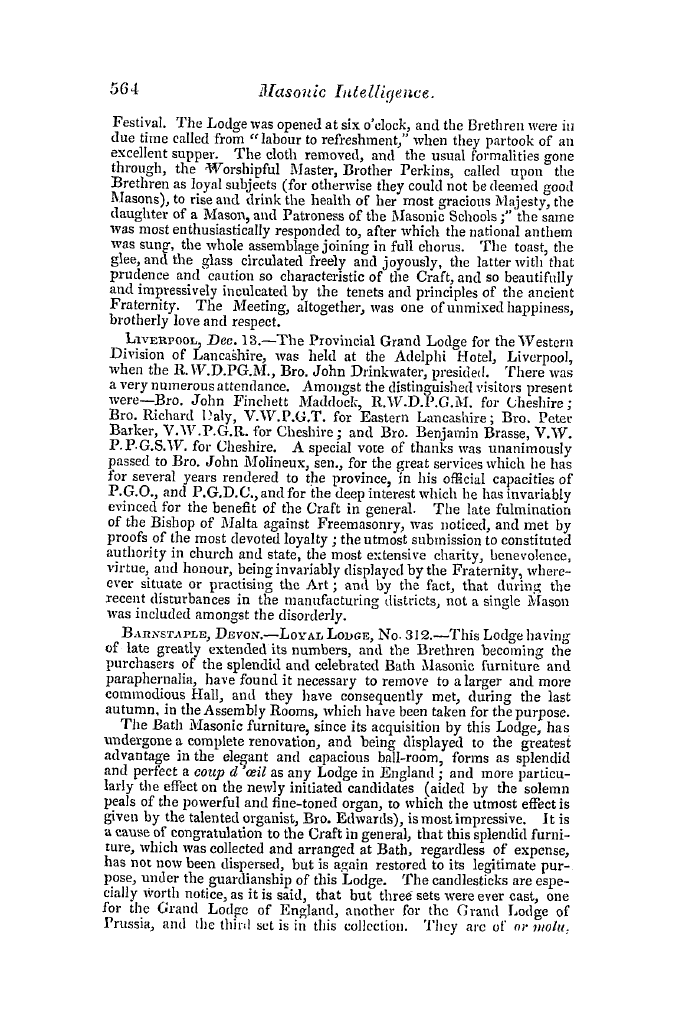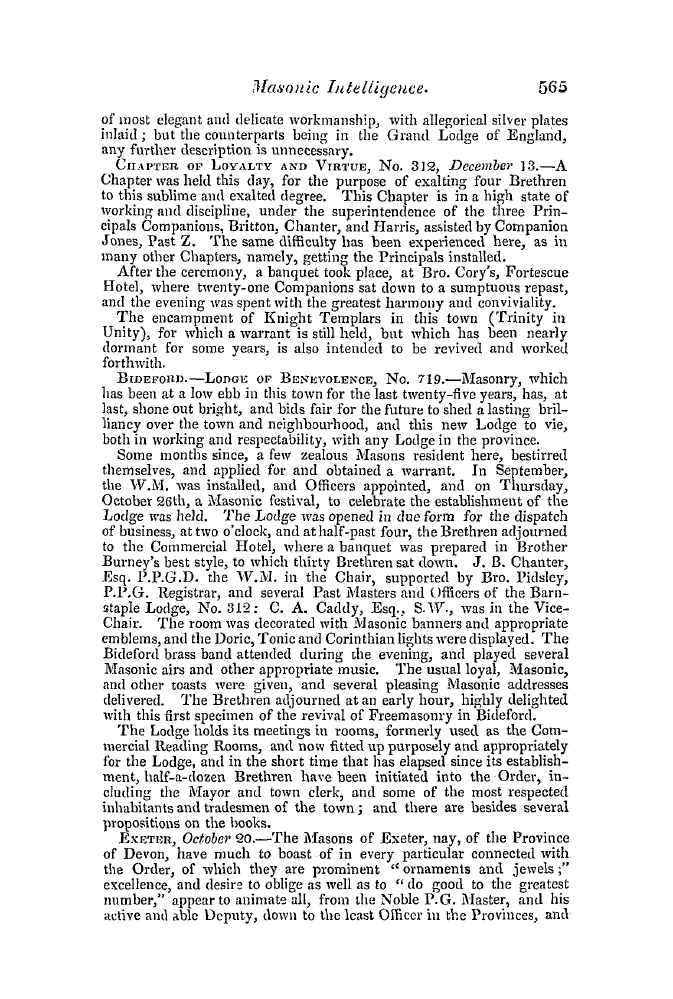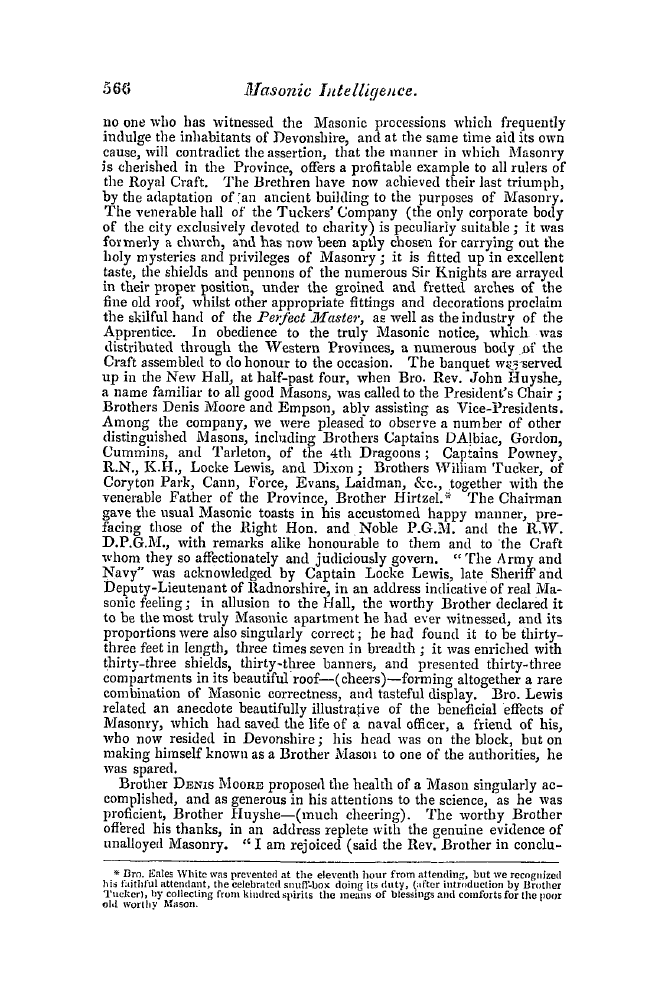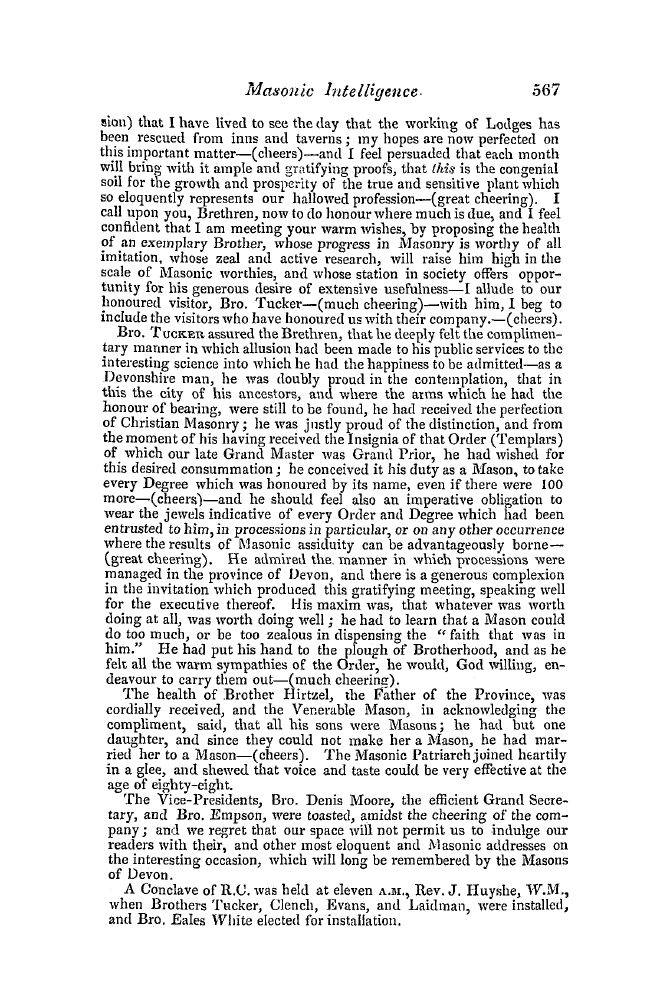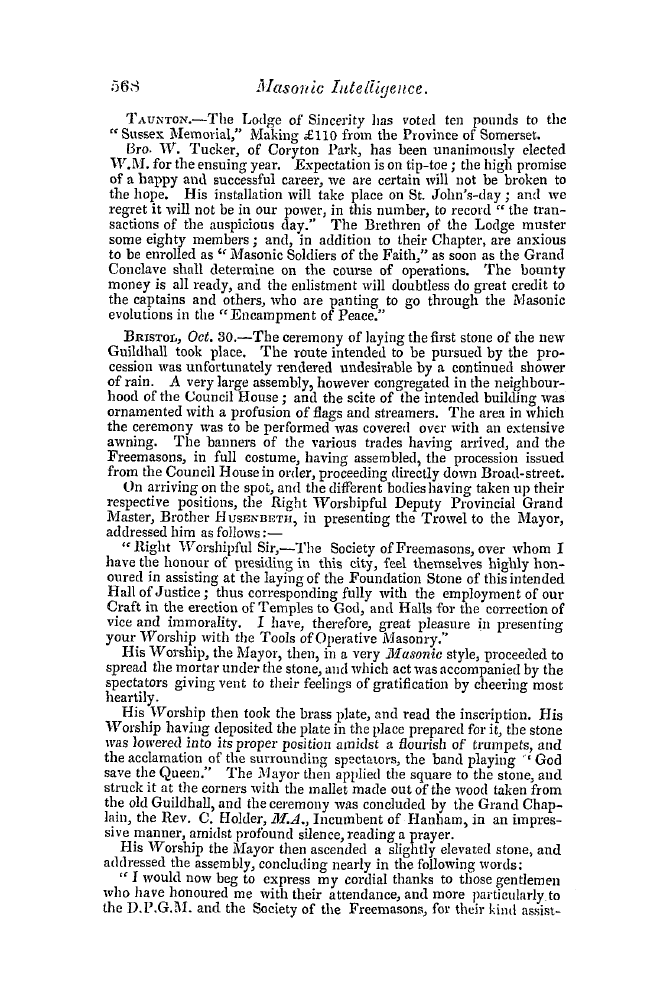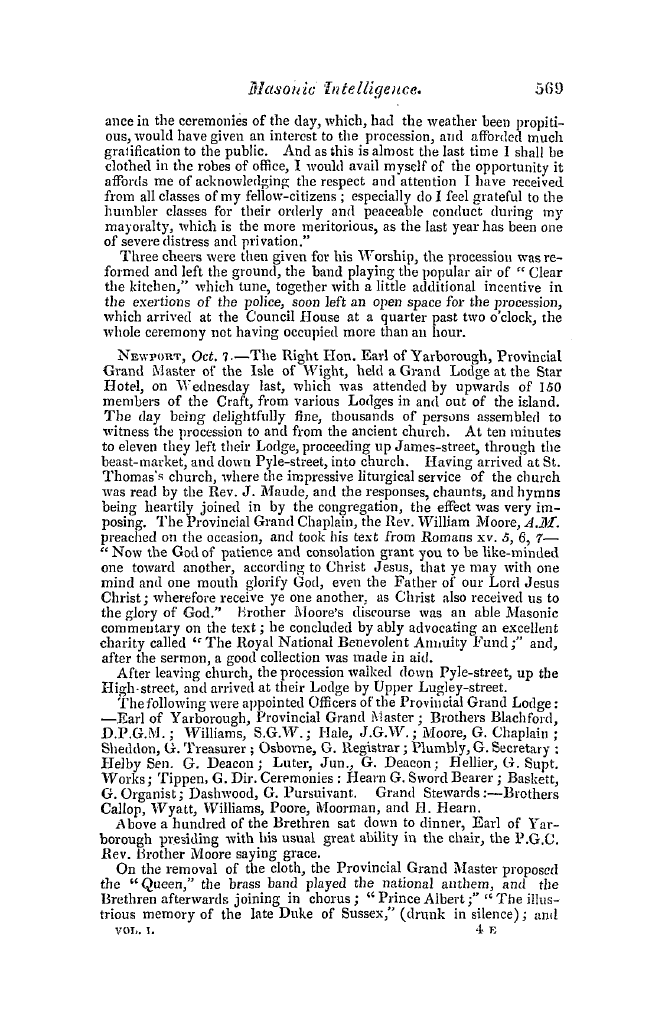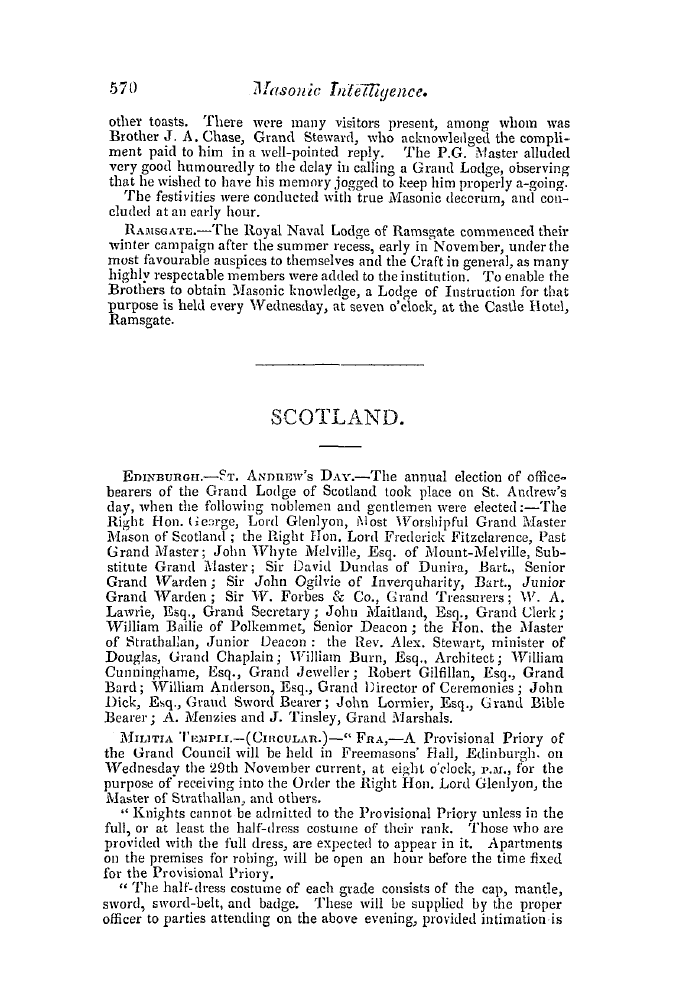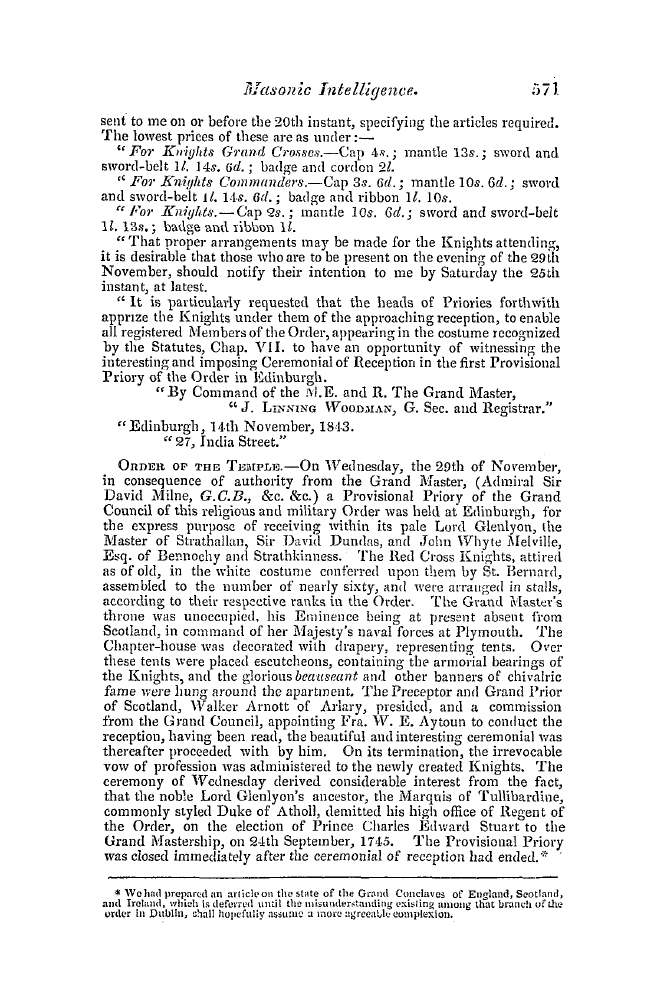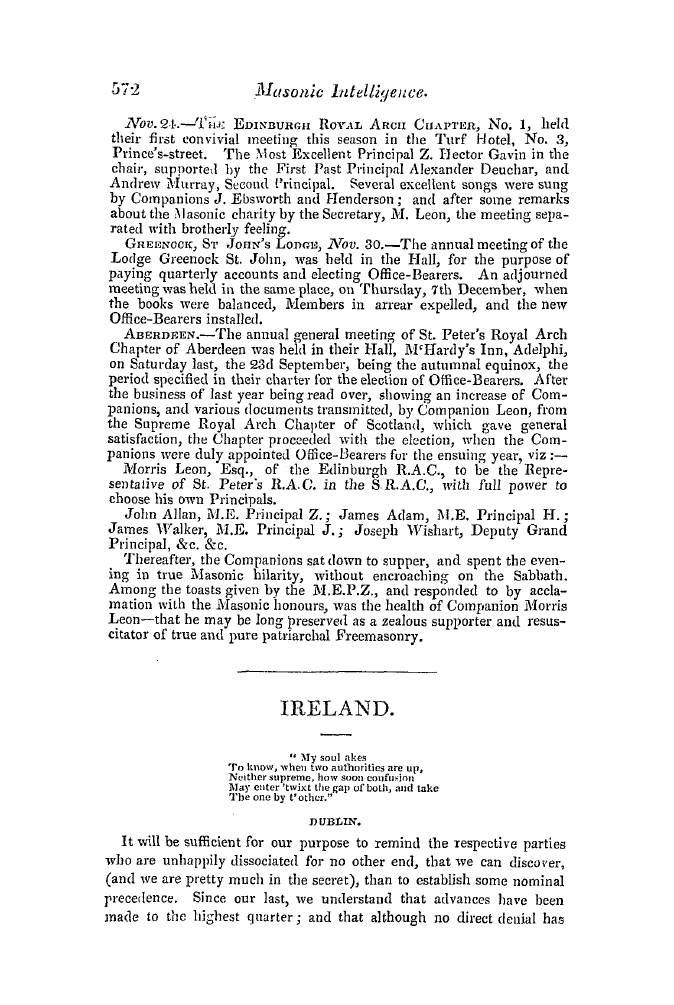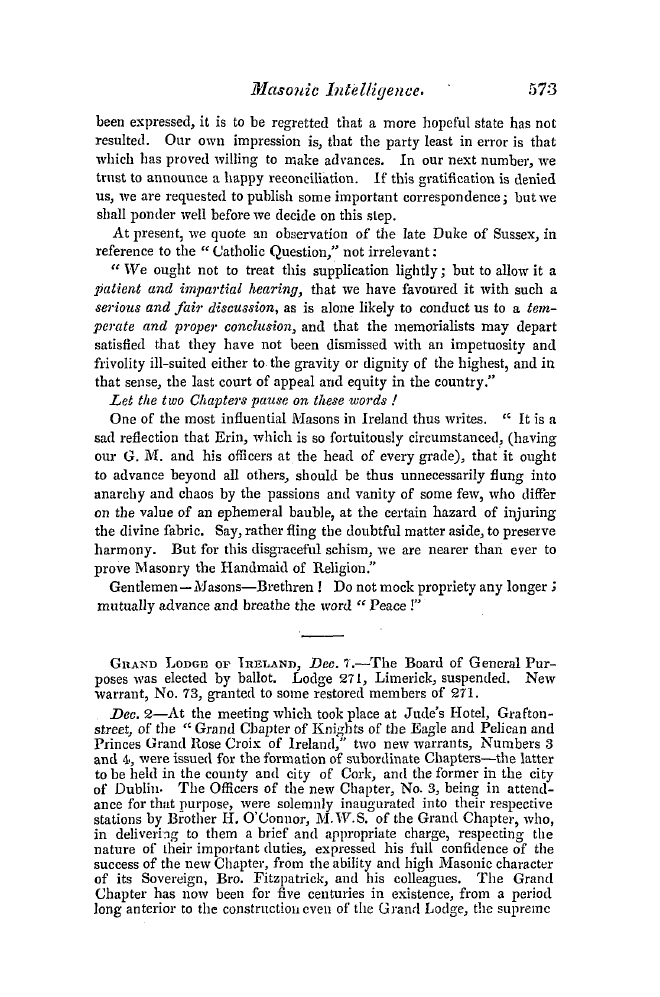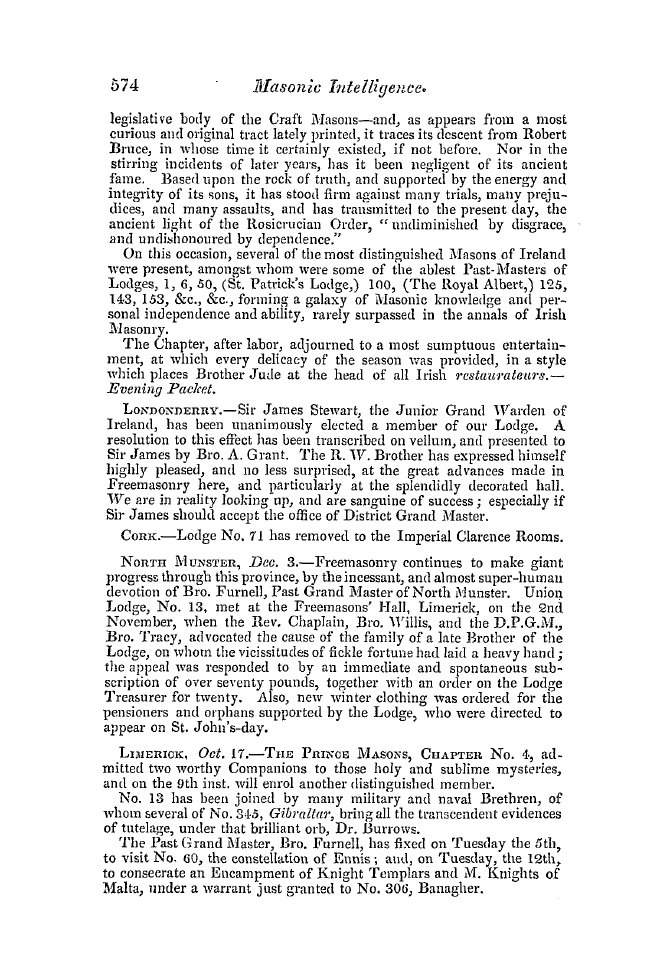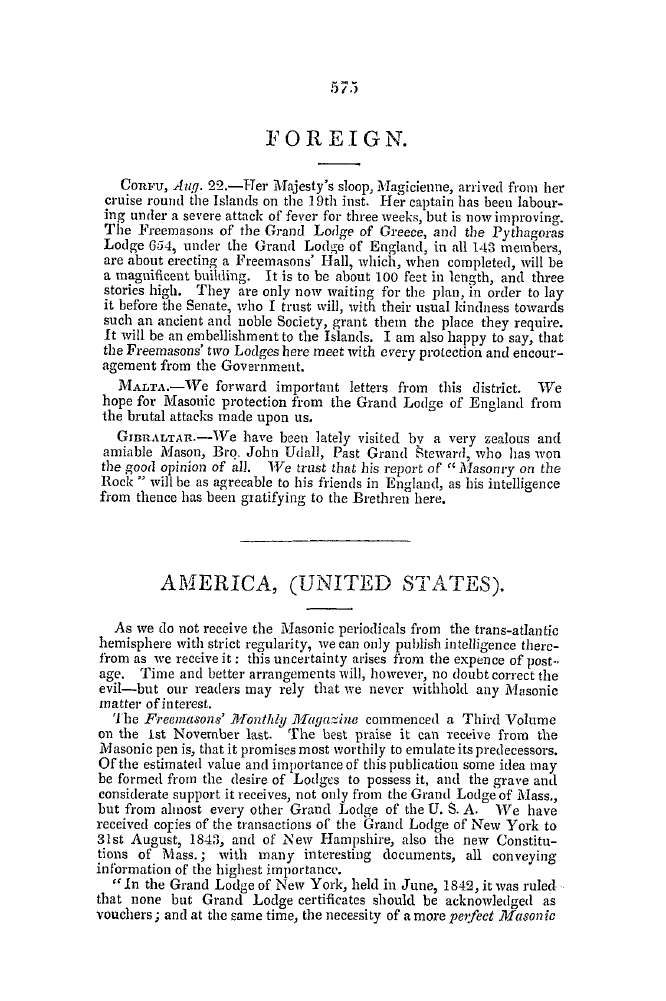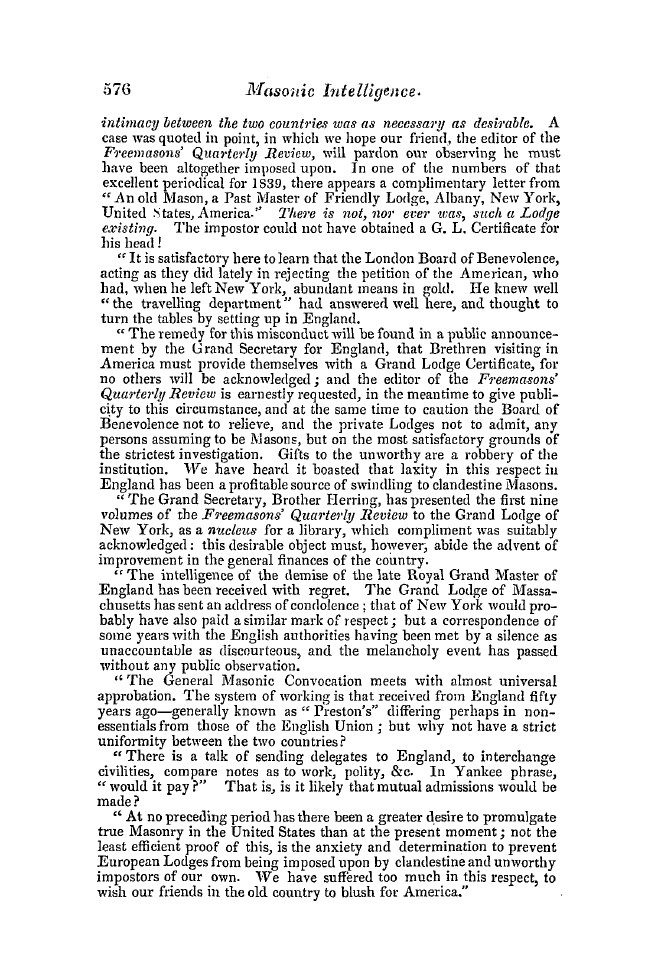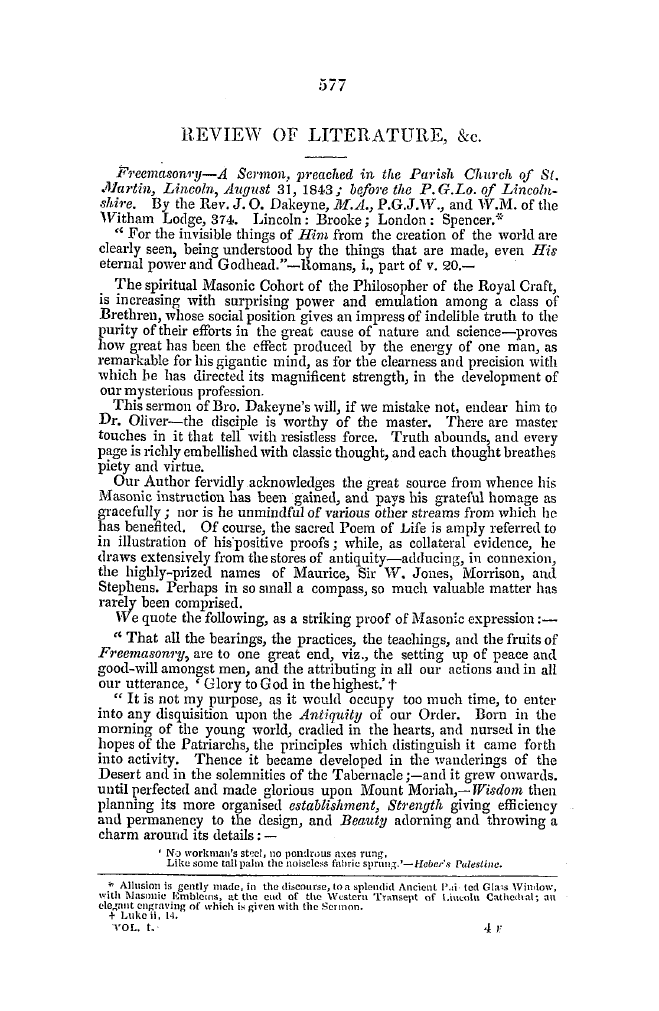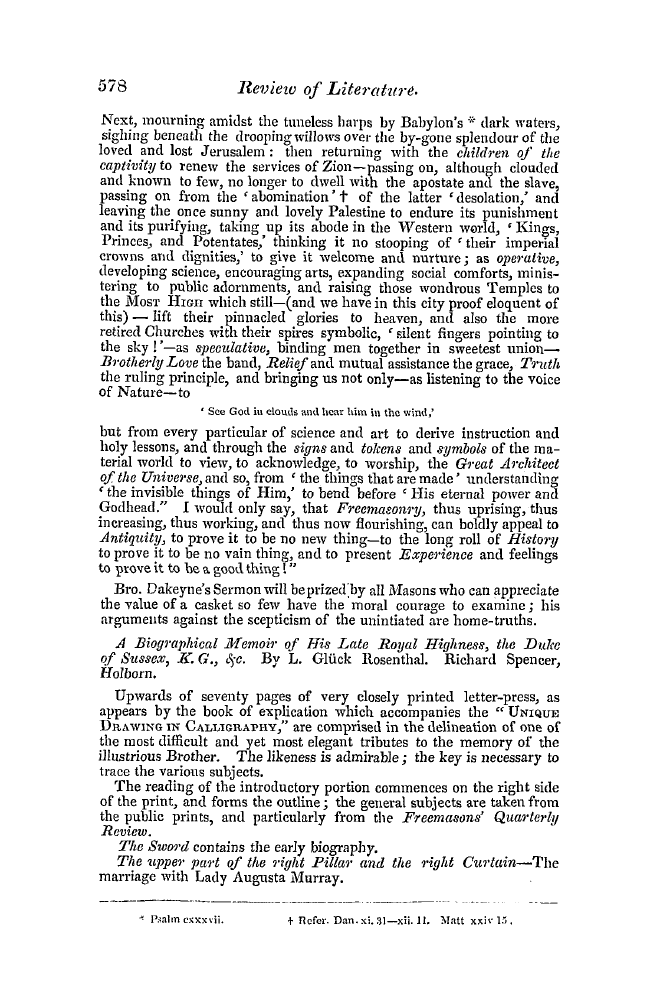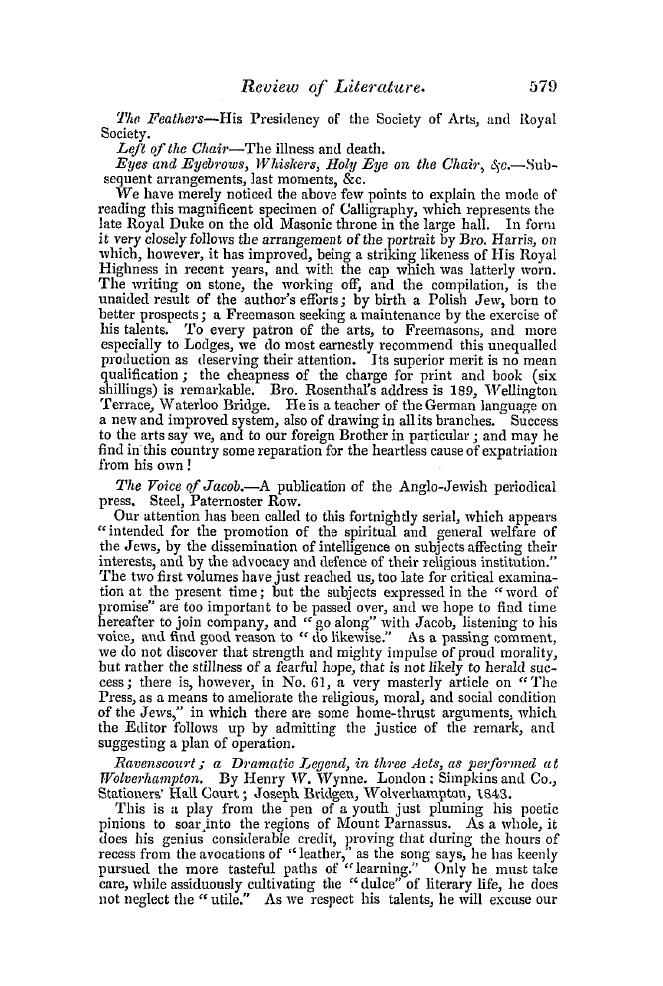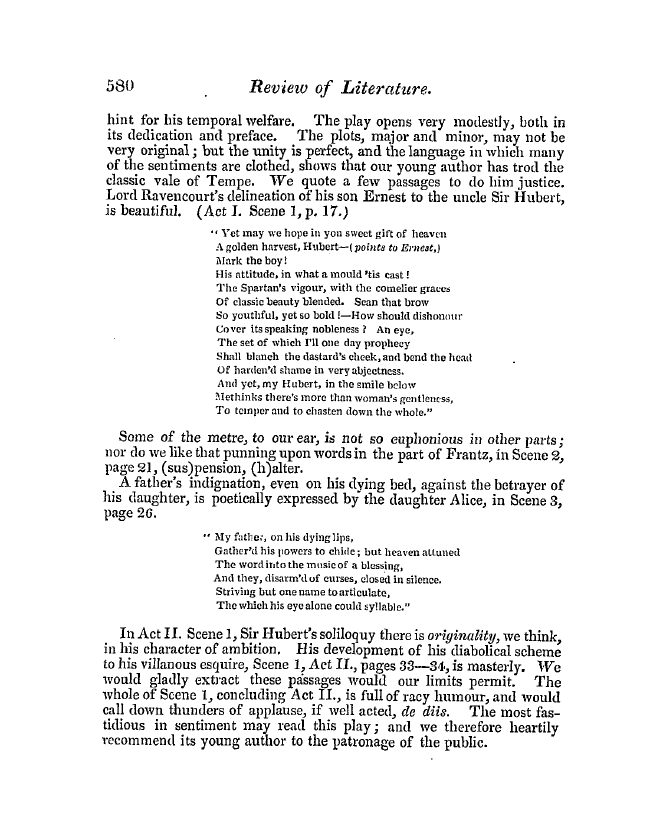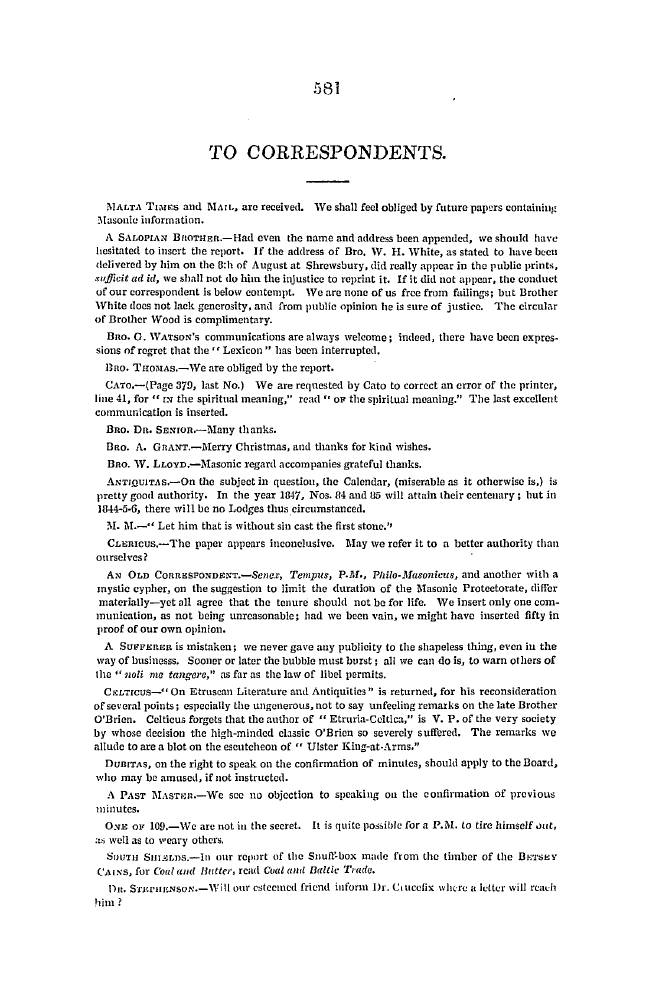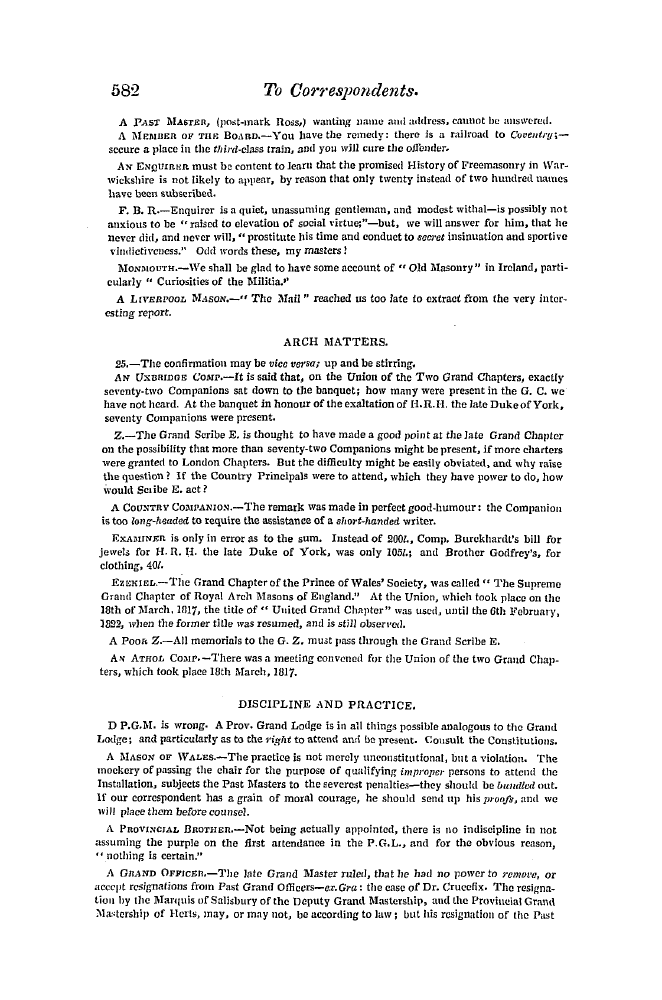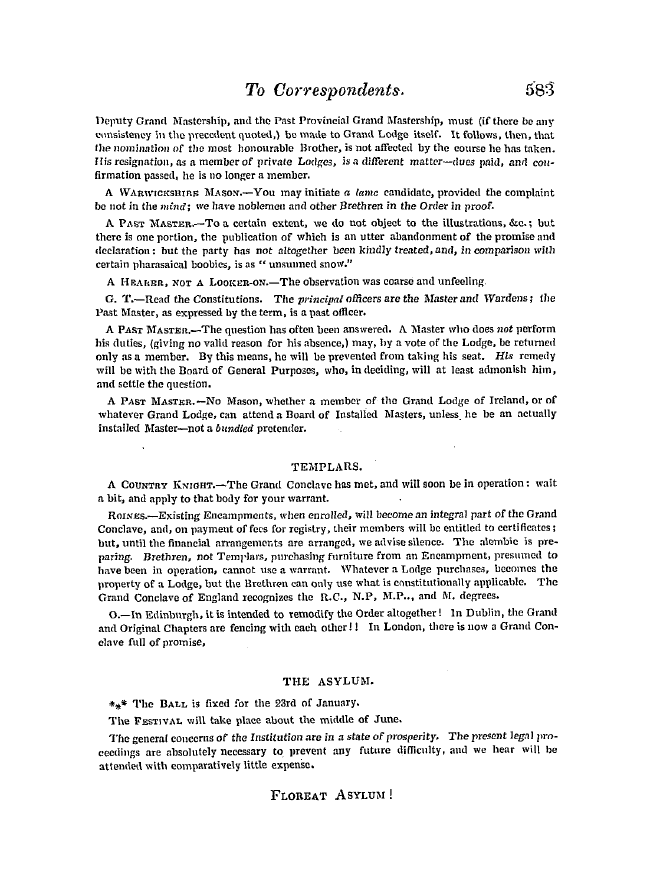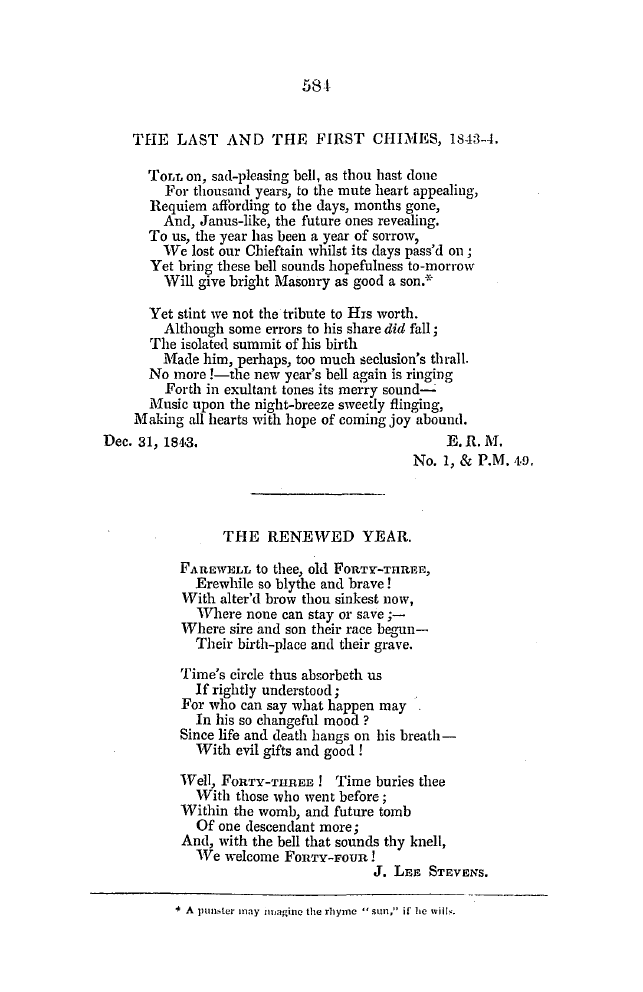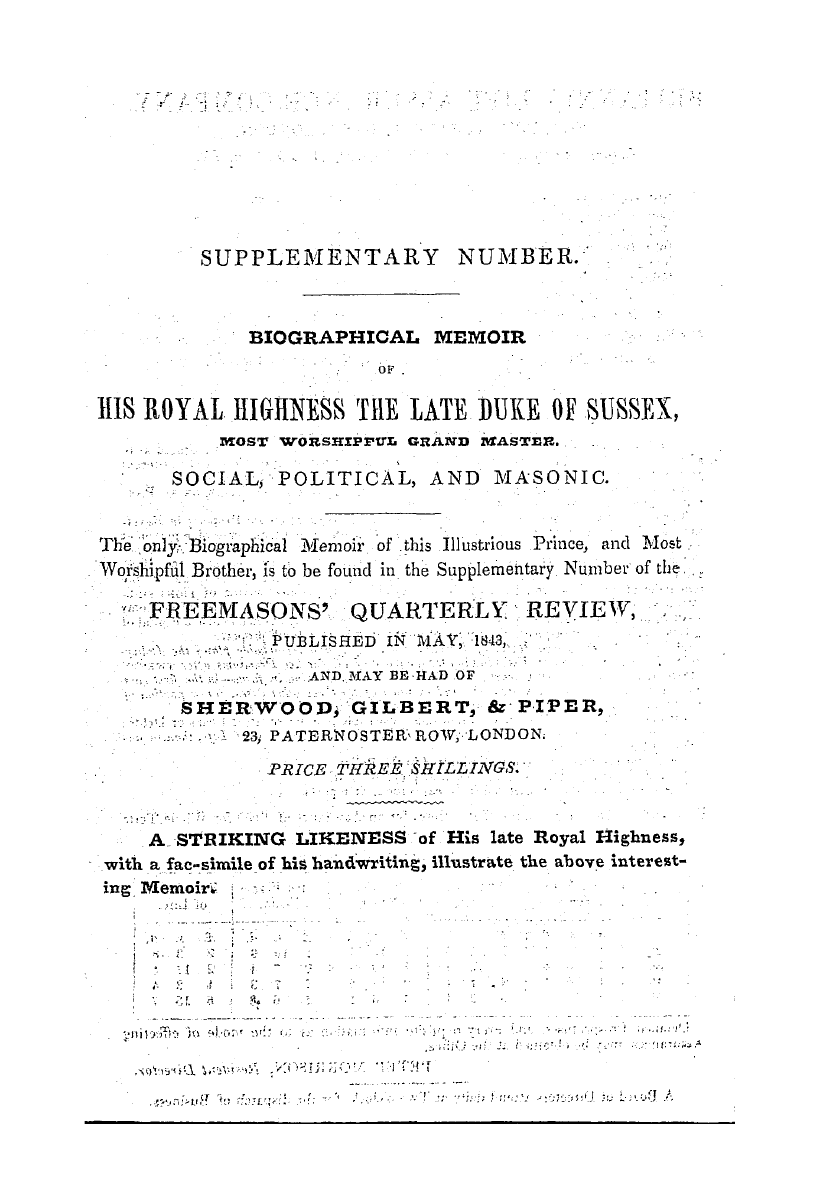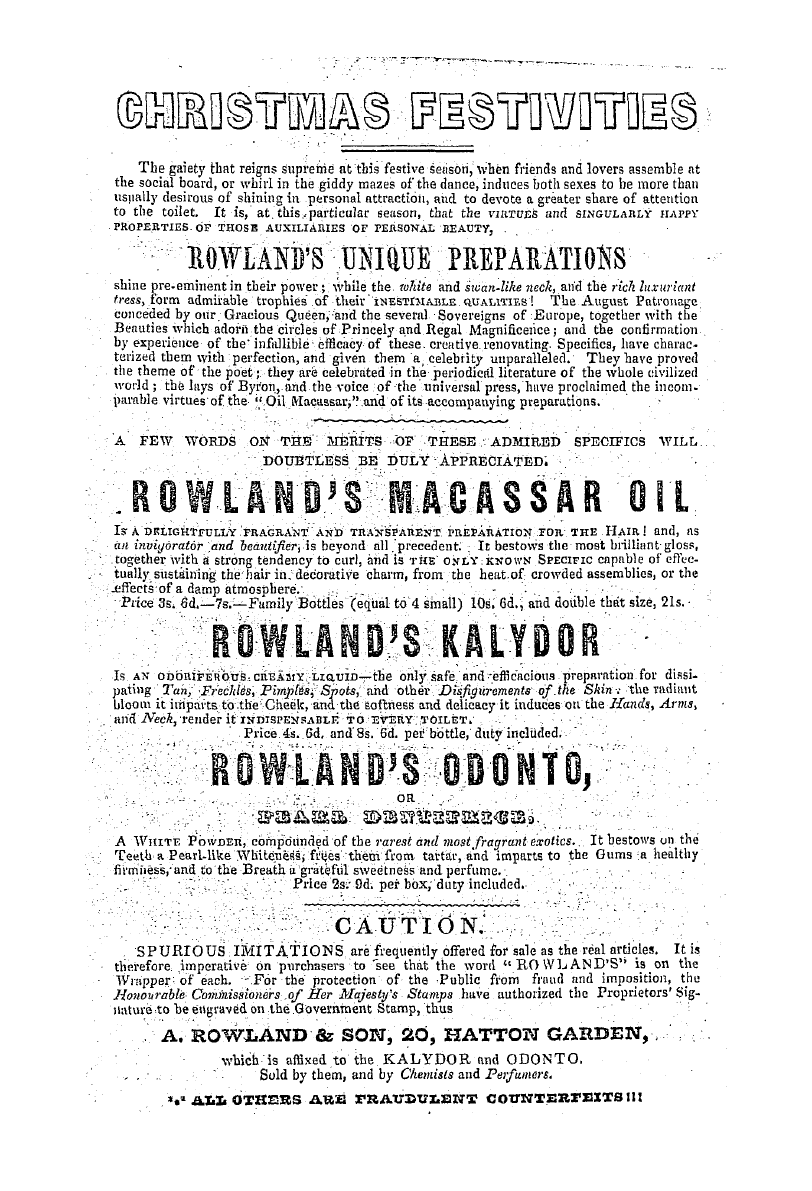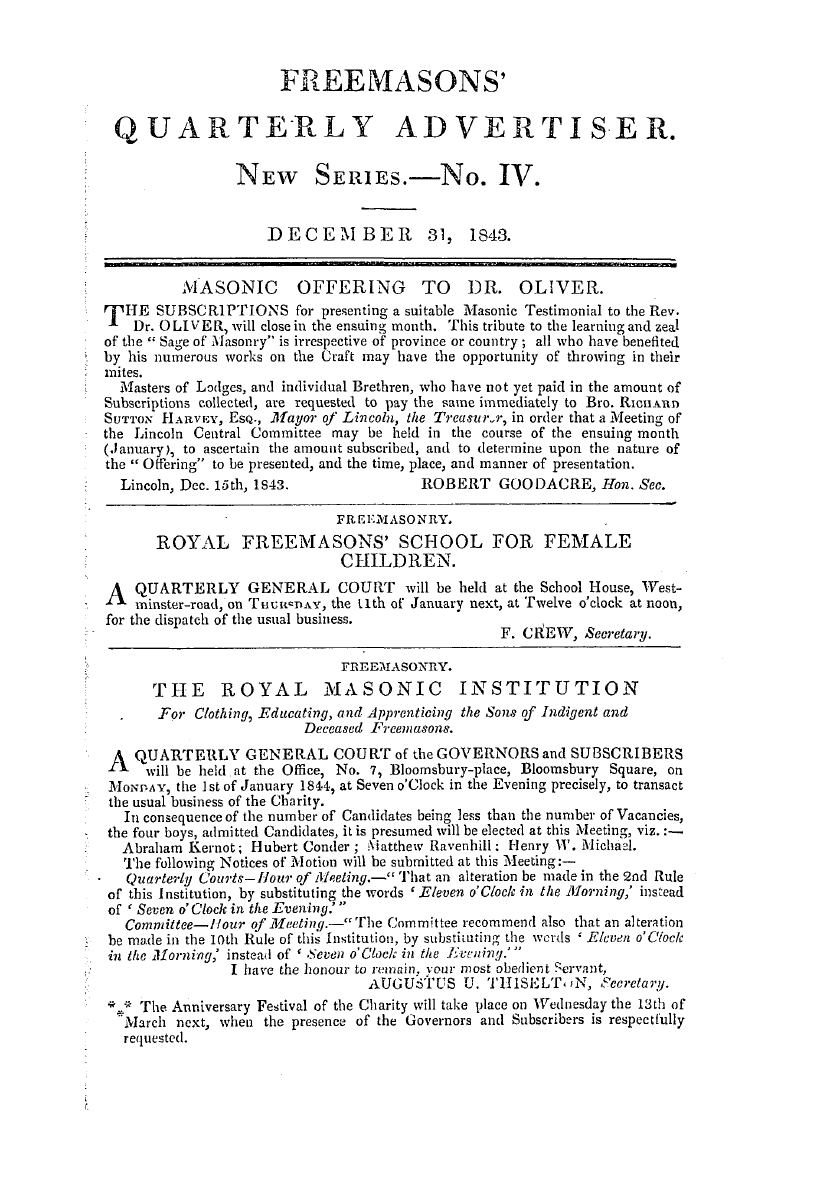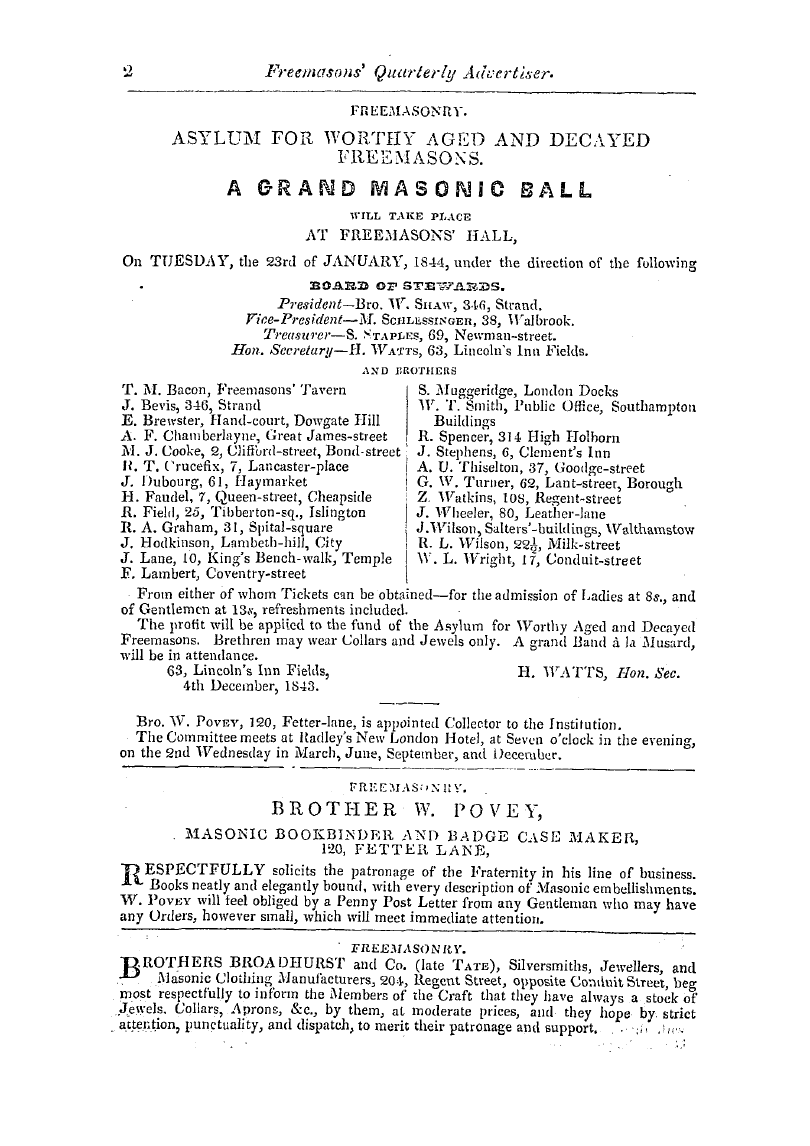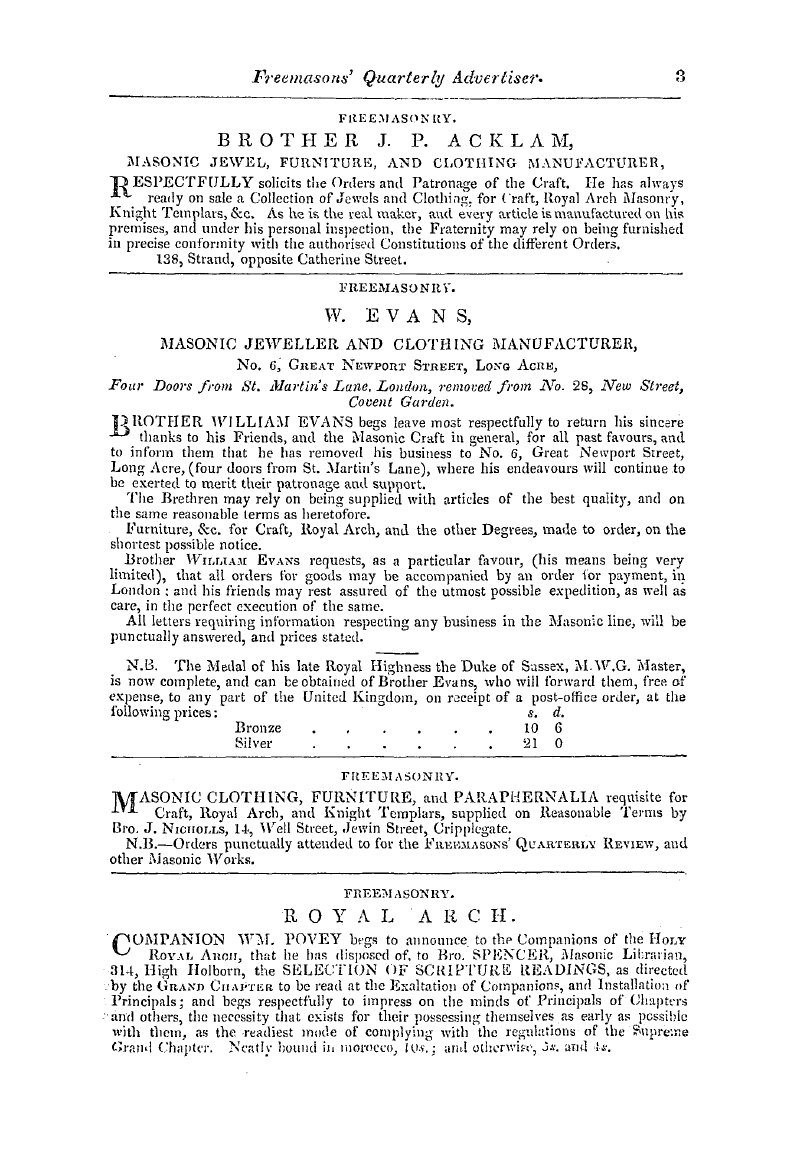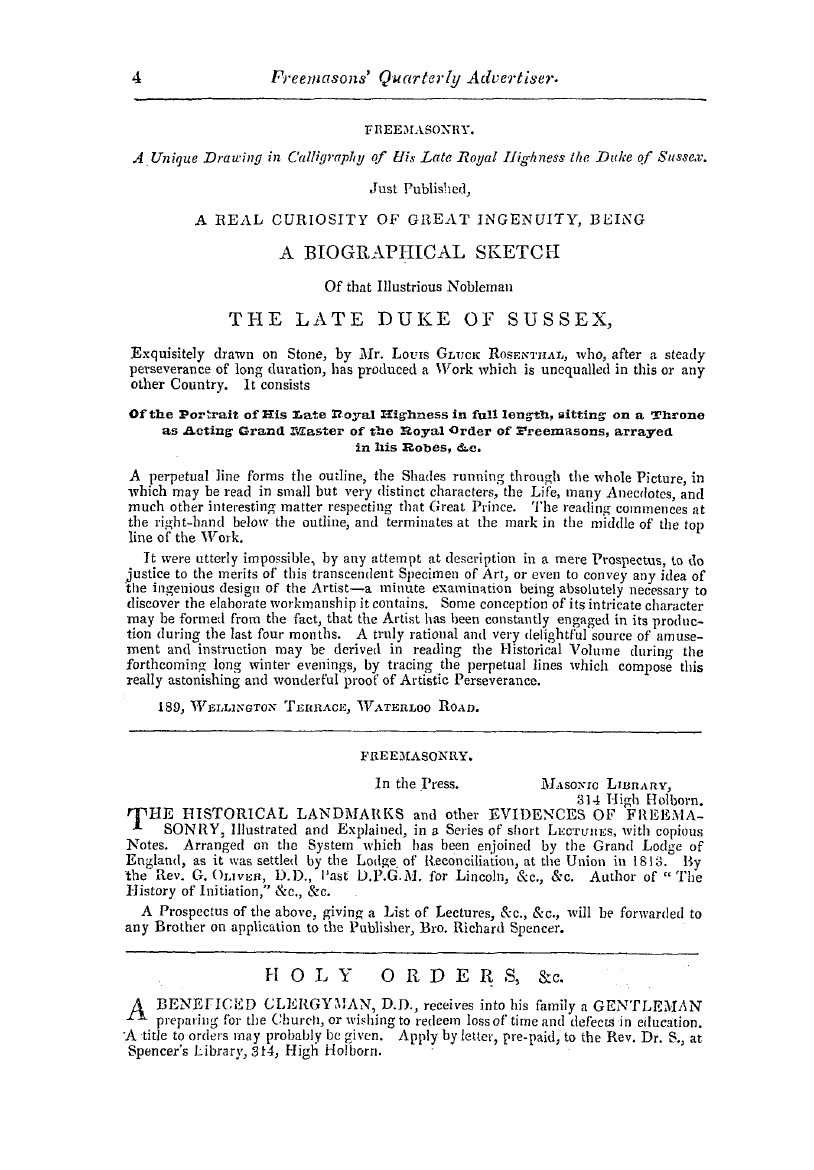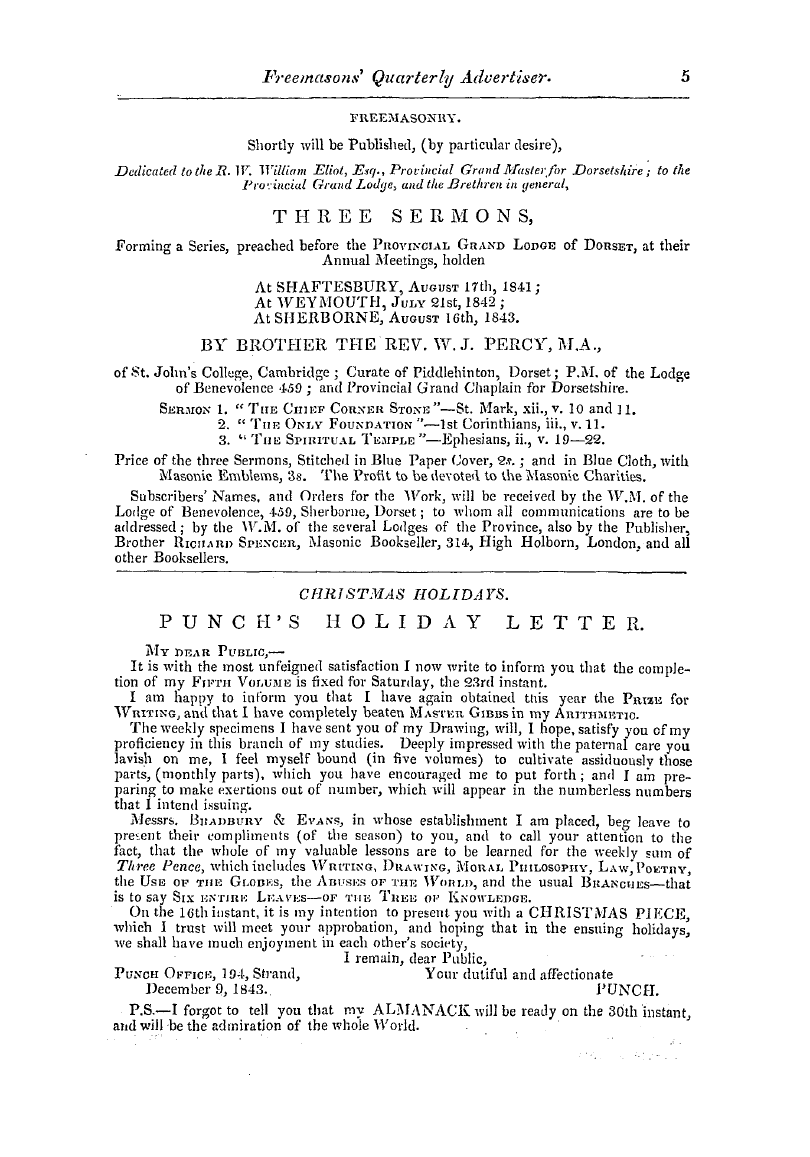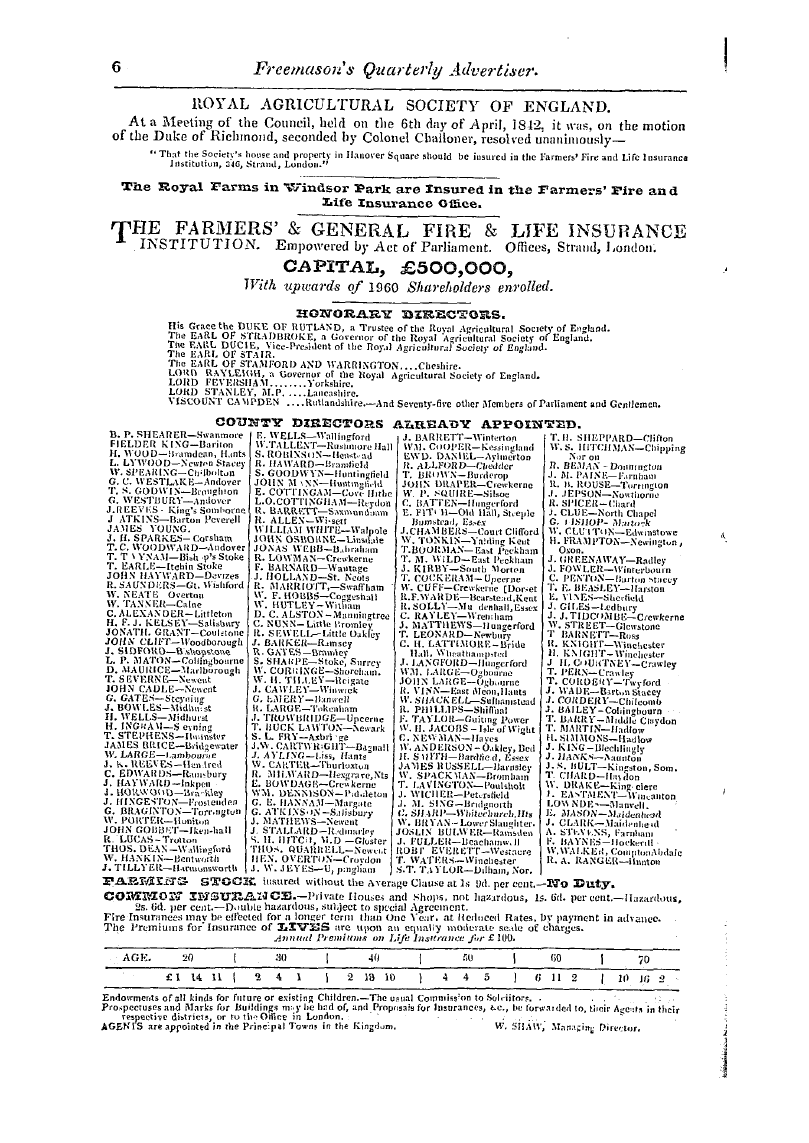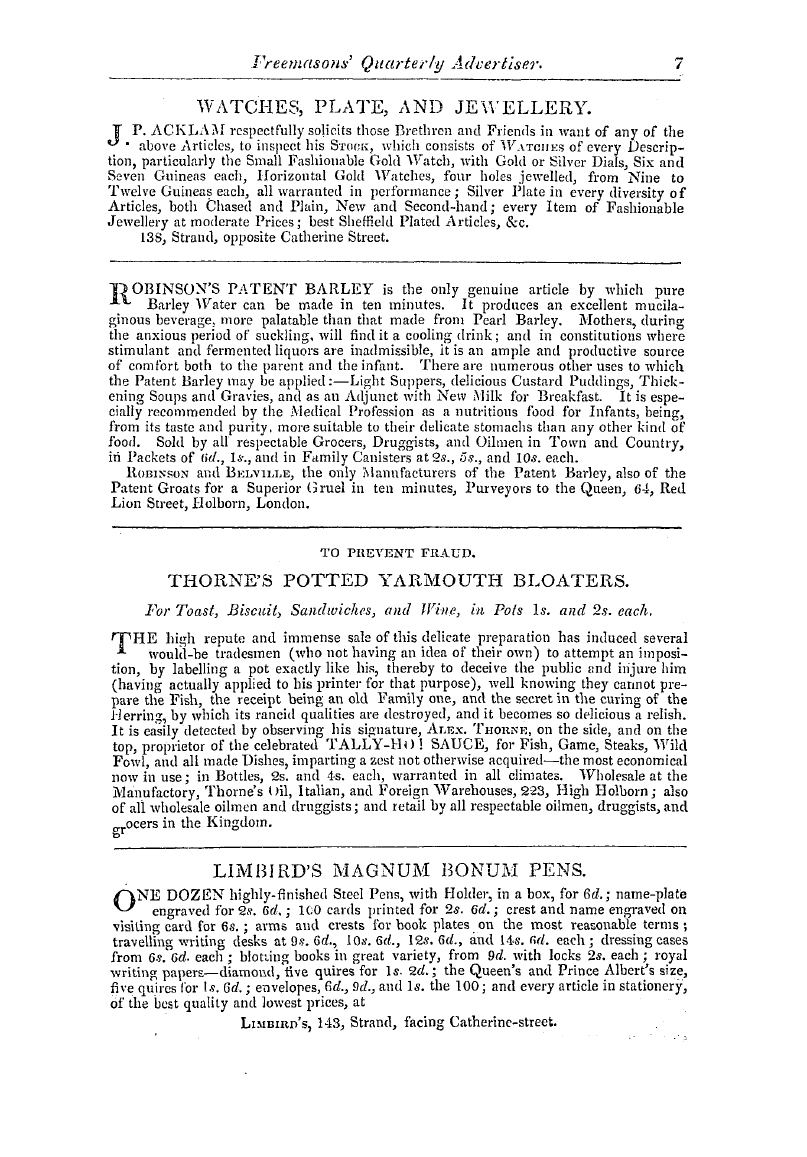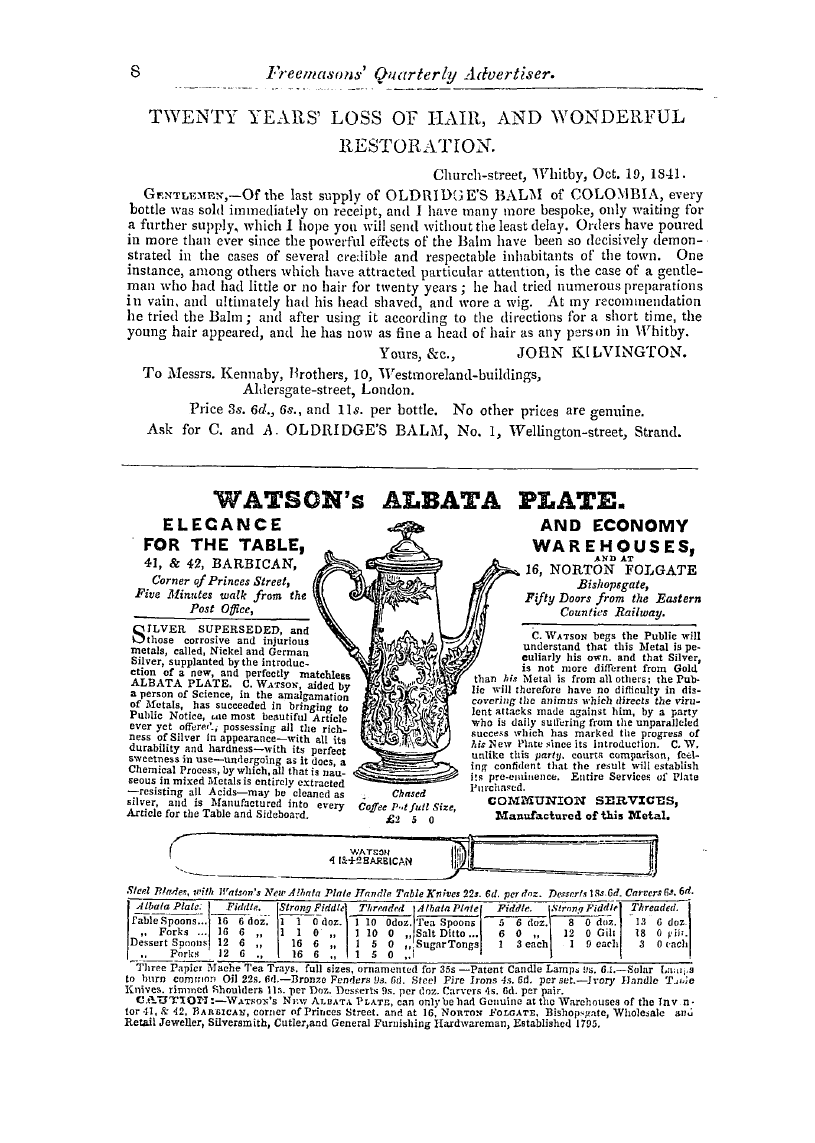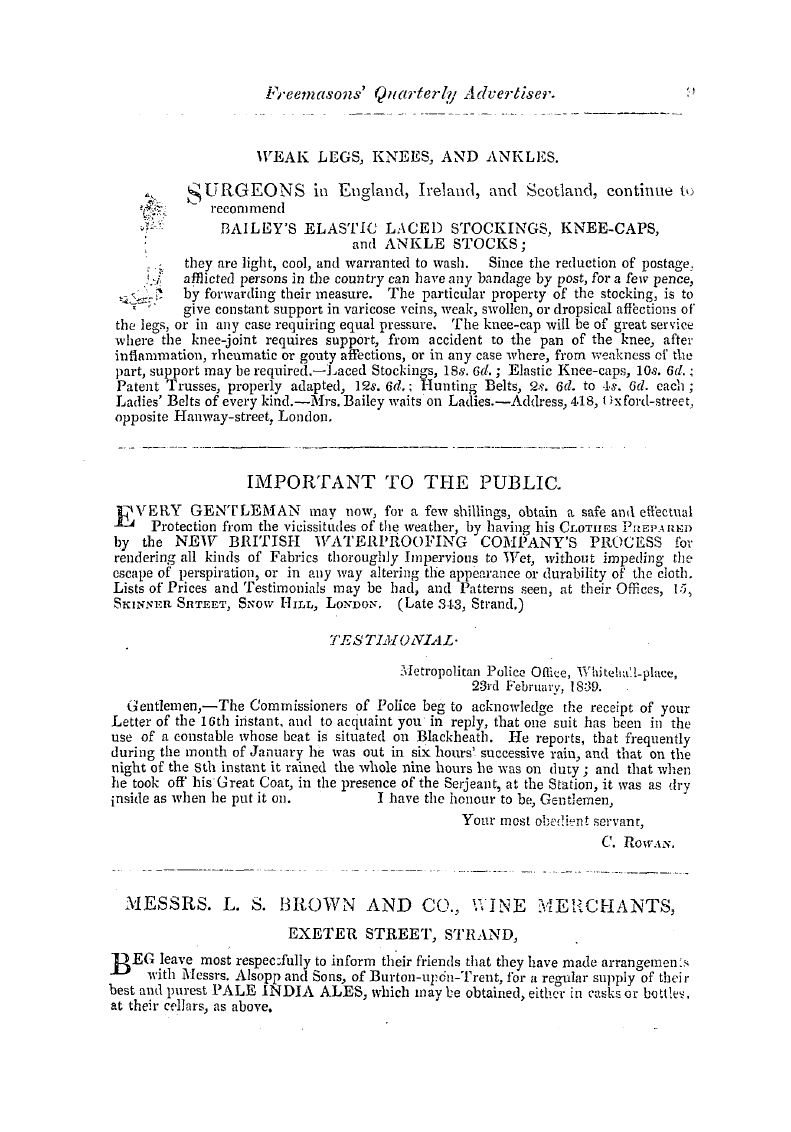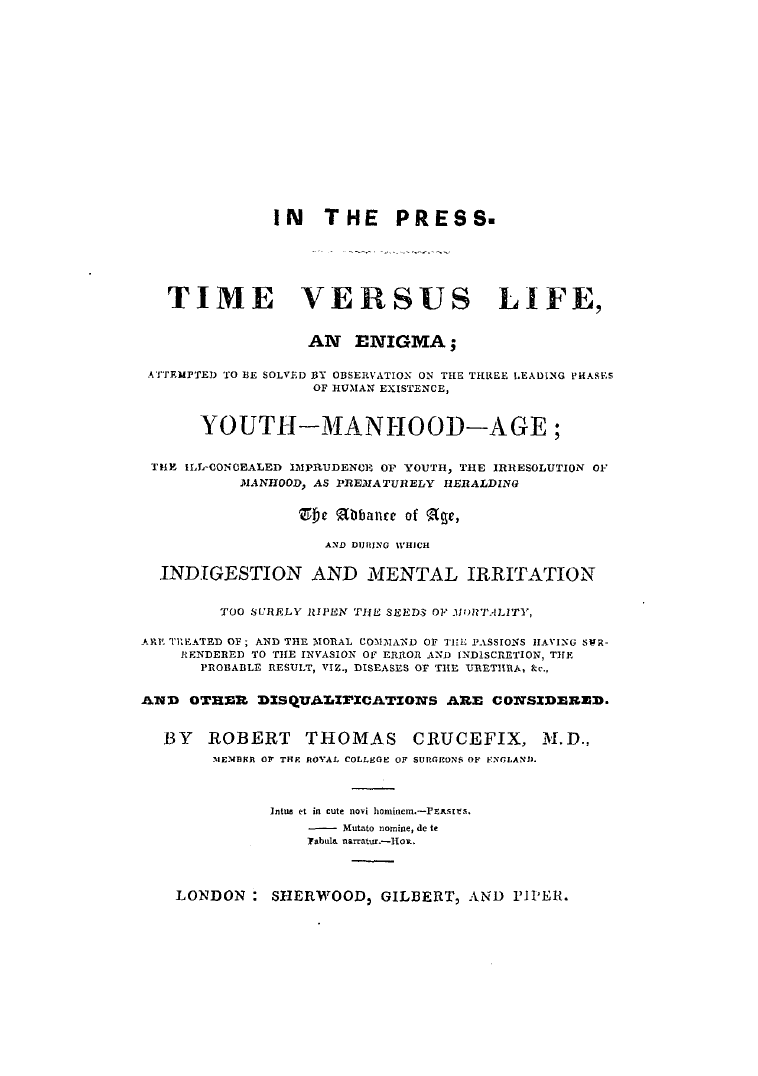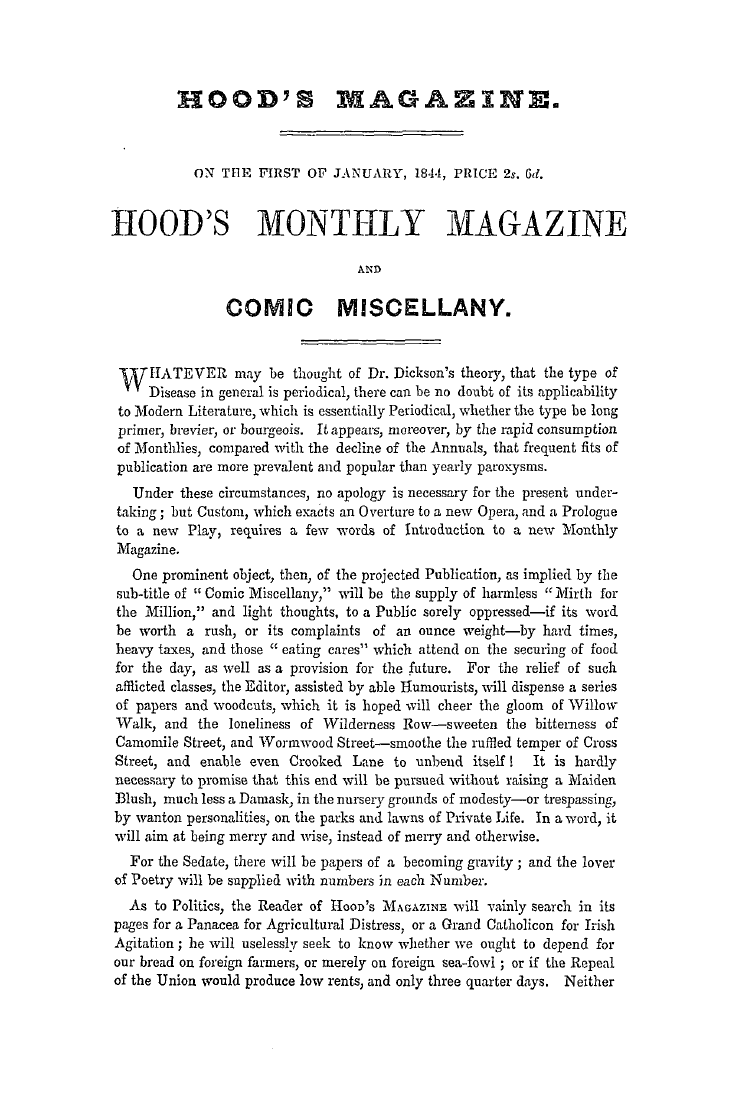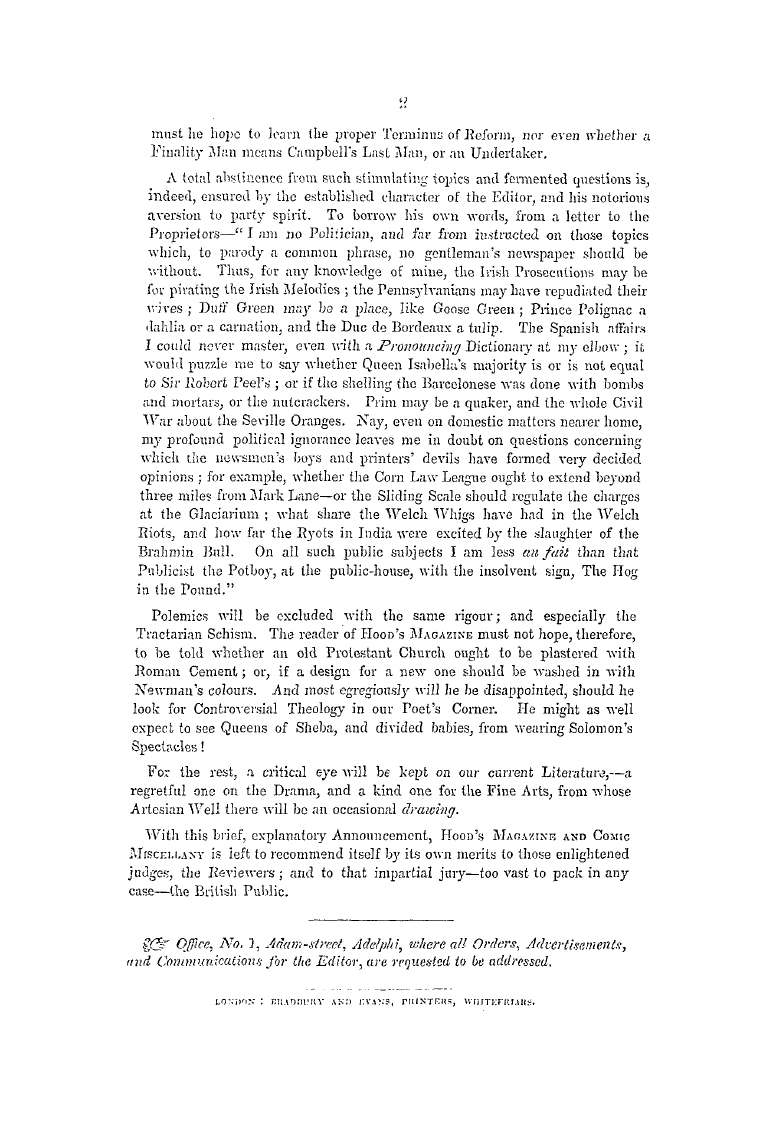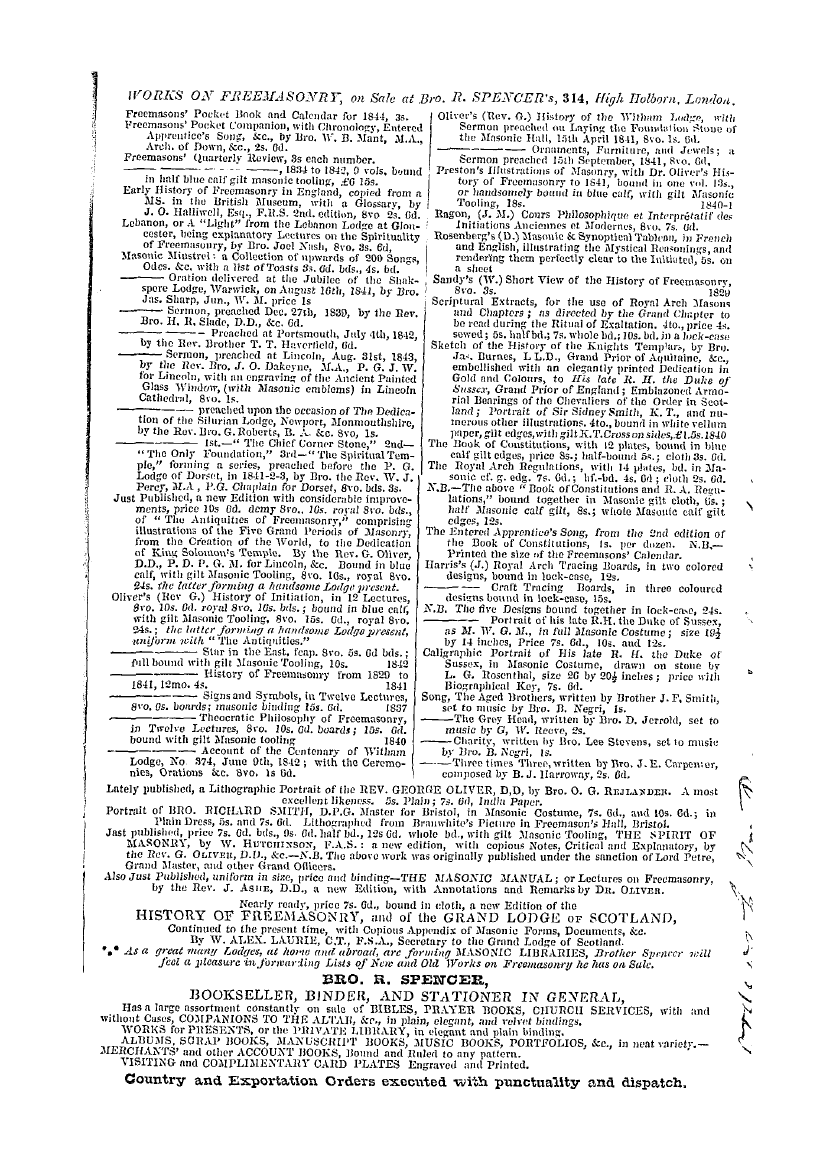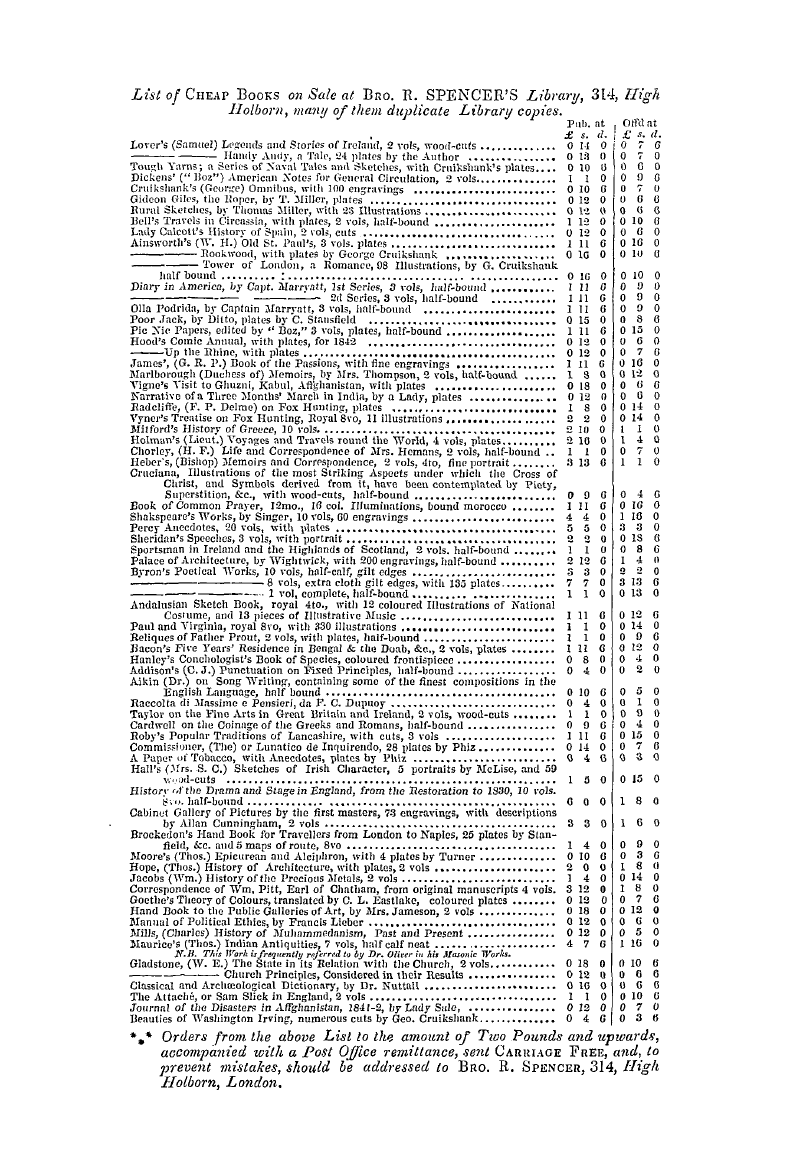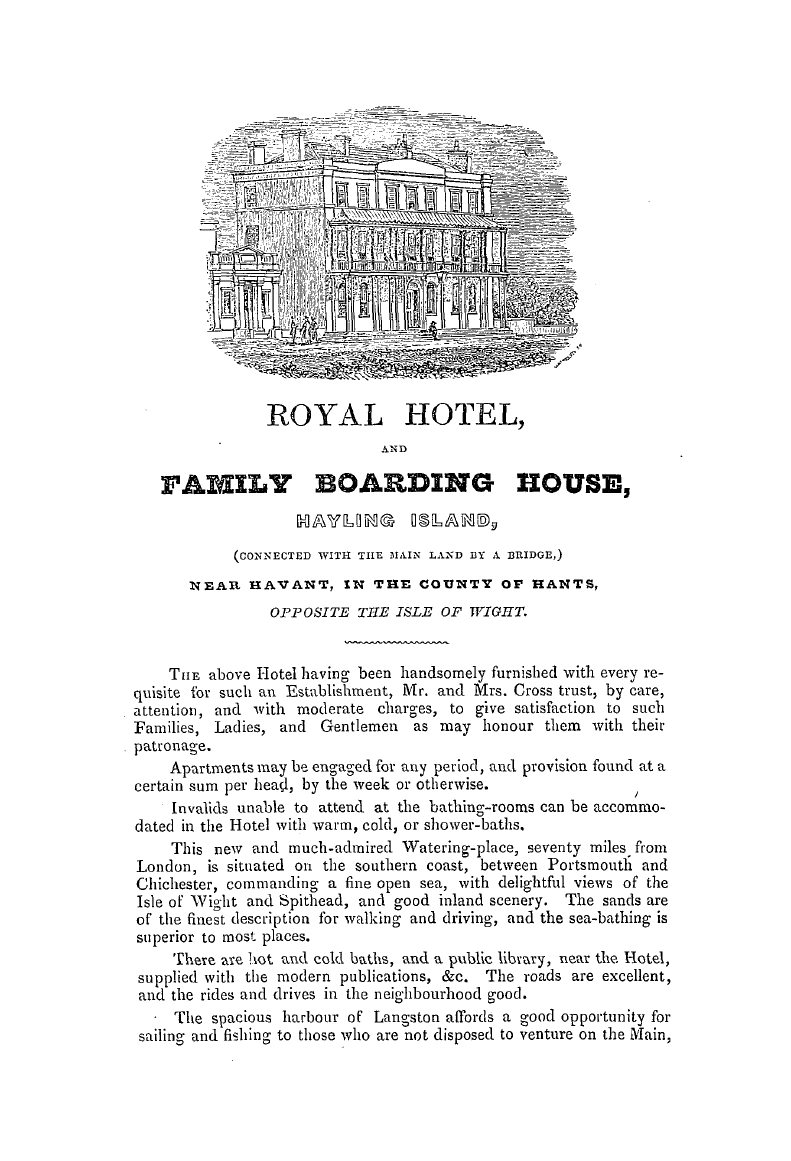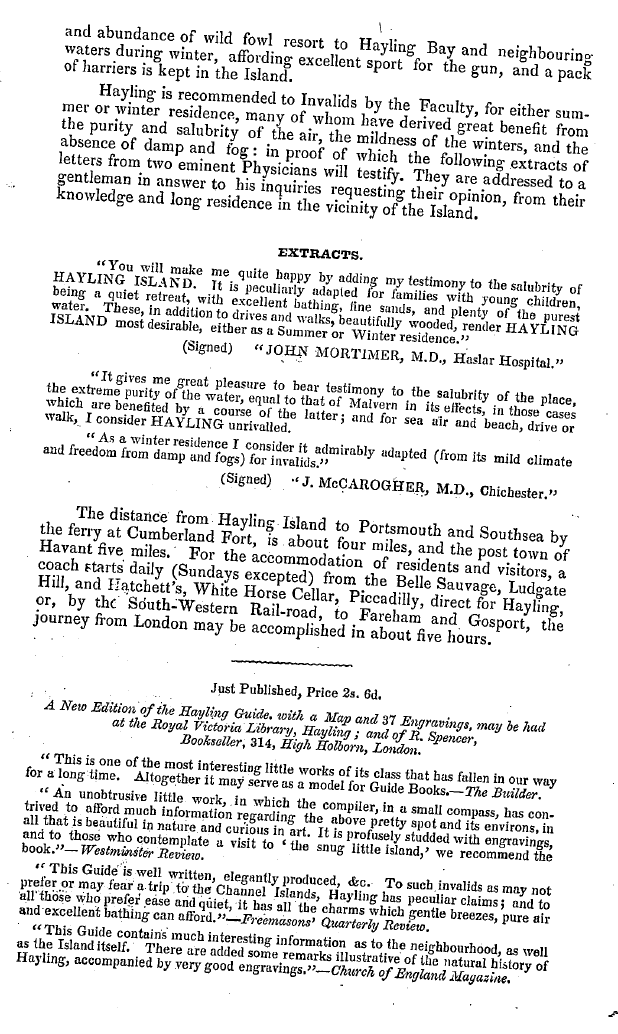-
Articles/Ads
Article ON THE KNOWLEDGE OF FREEMASONRY BY THE DRUIDS. ← Page 3 of 10 →
Note: This text has been automatically extracted via Optical Character Recognition (OCR) software.
On The Knowledge Of Freemasonry By The Druids.
of the Arkite mysteries , amongst whom the Druids may be fairly classed . Others have supposed him to be Mercury , whom Caesar calls their " tutelary god ; " but , although allusions may be found in the ceremonies of the Druids to identify the " Hermes " of the Britons with Mercury , that deity was evidentl y considered a secondary object of their veneration only ; and would therefore not be likely to have those sacrifices offered
to him which were considered to belong alone to their greatest god " Hu the Migbty . " The identification of the patriarch Noah , in his various deified representations by the Druids , is in no case more plainly delineated than in the history ascribed to the pagan Saturn , * and a careful comparison of
their attributes leads to the conviction that they originated in the Arkite rites of the Gabiri , but probably became corrupted from time to time , in their passage through the various nations who adopted this system of idolatry . The sun was frequently worshipped by the Phoenicians ; and both Molech and Baal , which signifies " lord or prince of the planets , " was worshipped as representing that luminary ; and the star painted into the forehead of Molech has been considered as representing the " star of
Ilemphan , " one of the titles of Hercules , who , from " Hiercol illuminavit omnia , " was also a representative of the sun ; and the chariot of Hu ( the Noah of the Druids ) has been thus describetl , as composed of the rays of the sun , — "light is his course , and swift , a particle of lucid sunshine is his car ; " * and hence it may be presumed Hu was worshipped by the Druids in conjunction with , if not as representing thatluminary . f The
eagle also , which was likewise typical of the sun , was frequently confounded by the Druids with the Arkite deity Hu ; and Talaski , in one of his poems , styles him , " Hu with the expanded wings ; " in which state the eagle ivas represented , as one of that deity ' s symbols , when used on great occasions , and more particularly when carried ( which it always was ) in the sacrificing processions of the Druids . The eagle and his progeny are further described , in one of the old Welch triads , as
belonging to Gwenddolu ( a supposed priest or divinity in one of the superstitious establishments of the Britons ) , and as " heing in the habit of daily consuming two persons . " This latter allusion , it is considered , intended to imply a practice of offering human sacrifices to that bird , as typical of the sun , to which all the idols , to whom sacrifices of this horrible nature were offered , bore particular reference . The Phoenicians , with the view of identifying their idolatrous
ceremonies as nearly as possible to incidents which were venerated as sacred , by the professors of the true worship , and making them appear more consistent and attractive , lost no opportunity of applying those incidents to their own base purposes ; and with this object , they denoted their worship of Molech by carrying him up and down in a tabernacle or ark , ;] -, after a solemn manner of procession , in an unwarrantable imitation of the tabernacle of Moses , which , in their ignorance , they conceived to be a mere representation of the ark of Noah , instead of what it really
was , the repository of the tables of the law . The Phoenician patron of agriculture , " Agruerus , " was no other than the deified patriarch Noah , || uncier another attribute , and his statue was much revered : he had also a shrine or tabernacle , which was drawn
Note: This text has been automatically extracted via Optical Character Recognition (OCR) software.
On The Knowledge Of Freemasonry By The Druids.
of the Arkite mysteries , amongst whom the Druids may be fairly classed . Others have supposed him to be Mercury , whom Caesar calls their " tutelary god ; " but , although allusions may be found in the ceremonies of the Druids to identify the " Hermes " of the Britons with Mercury , that deity was evidentl y considered a secondary object of their veneration only ; and would therefore not be likely to have those sacrifices offered
to him which were considered to belong alone to their greatest god " Hu the Migbty . " The identification of the patriarch Noah , in his various deified representations by the Druids , is in no case more plainly delineated than in the history ascribed to the pagan Saturn , * and a careful comparison of
their attributes leads to the conviction that they originated in the Arkite rites of the Gabiri , but probably became corrupted from time to time , in their passage through the various nations who adopted this system of idolatry . The sun was frequently worshipped by the Phoenicians ; and both Molech and Baal , which signifies " lord or prince of the planets , " was worshipped as representing that luminary ; and the star painted into the forehead of Molech has been considered as representing the " star of
Ilemphan , " one of the titles of Hercules , who , from " Hiercol illuminavit omnia , " was also a representative of the sun ; and the chariot of Hu ( the Noah of the Druids ) has been thus describetl , as composed of the rays of the sun , — "light is his course , and swift , a particle of lucid sunshine is his car ; " * and hence it may be presumed Hu was worshipped by the Druids in conjunction with , if not as representing thatluminary . f The
eagle also , which was likewise typical of the sun , was frequently confounded by the Druids with the Arkite deity Hu ; and Talaski , in one of his poems , styles him , " Hu with the expanded wings ; " in which state the eagle ivas represented , as one of that deity ' s symbols , when used on great occasions , and more particularly when carried ( which it always was ) in the sacrificing processions of the Druids . The eagle and his progeny are further described , in one of the old Welch triads , as
belonging to Gwenddolu ( a supposed priest or divinity in one of the superstitious establishments of the Britons ) , and as " heing in the habit of daily consuming two persons . " This latter allusion , it is considered , intended to imply a practice of offering human sacrifices to that bird , as typical of the sun , to which all the idols , to whom sacrifices of this horrible nature were offered , bore particular reference . The Phoenicians , with the view of identifying their idolatrous
ceremonies as nearly as possible to incidents which were venerated as sacred , by the professors of the true worship , and making them appear more consistent and attractive , lost no opportunity of applying those incidents to their own base purposes ; and with this object , they denoted their worship of Molech by carrying him up and down in a tabernacle or ark , ;] -, after a solemn manner of procession , in an unwarrantable imitation of the tabernacle of Moses , which , in their ignorance , they conceived to be a mere representation of the ark of Noah , instead of what it really
was , the repository of the tables of the law . The Phoenician patron of agriculture , " Agruerus , " was no other than the deified patriarch Noah , || uncier another attribute , and his statue was much revered : he had also a shrine or tabernacle , which was drawn































































